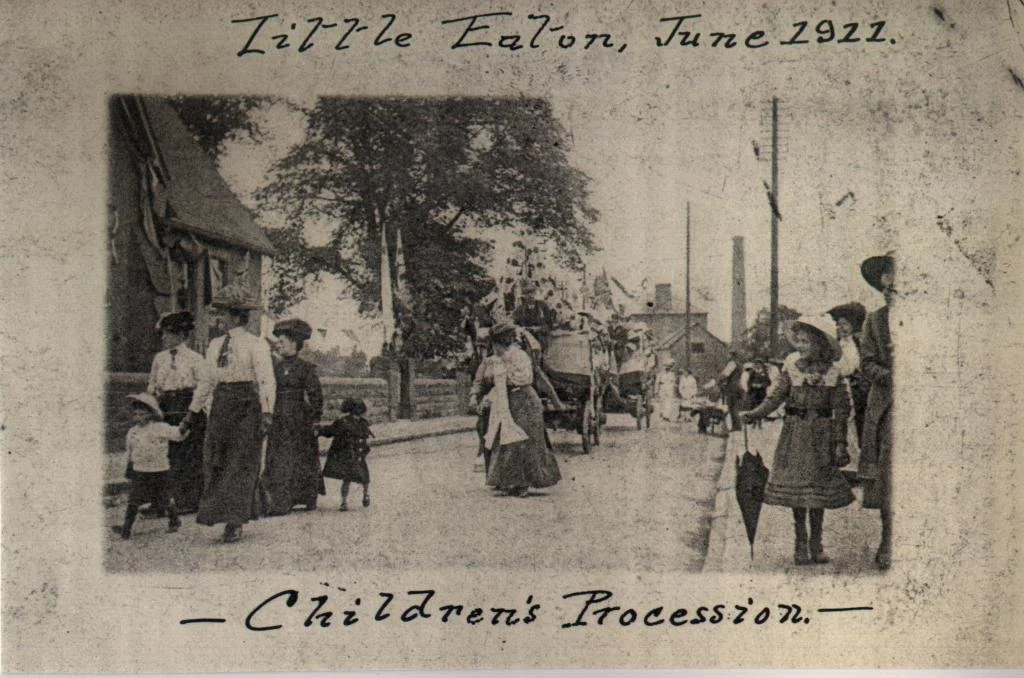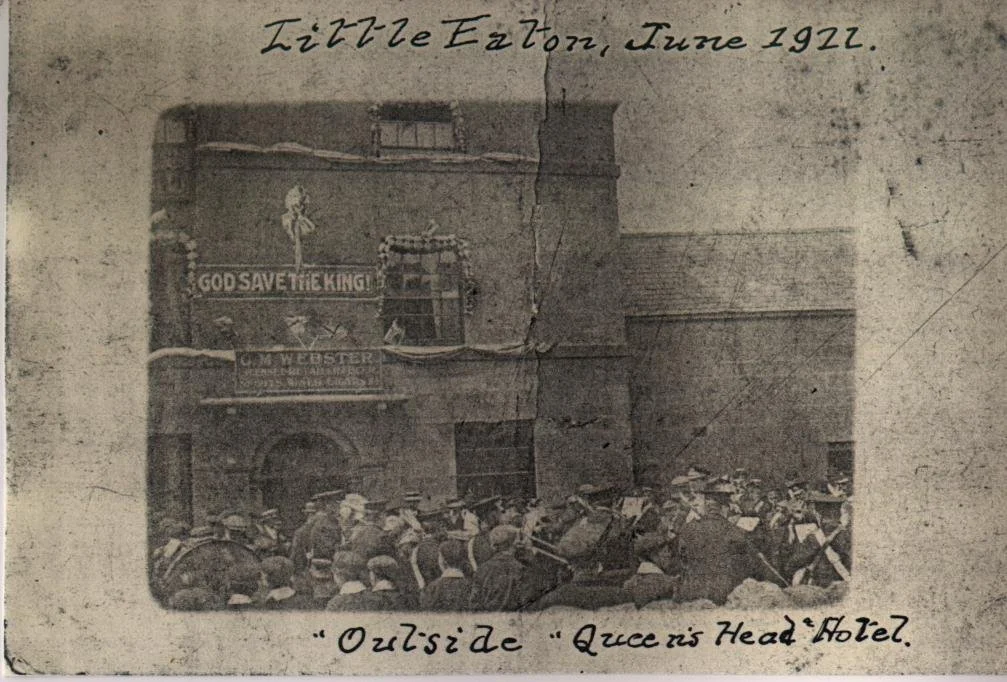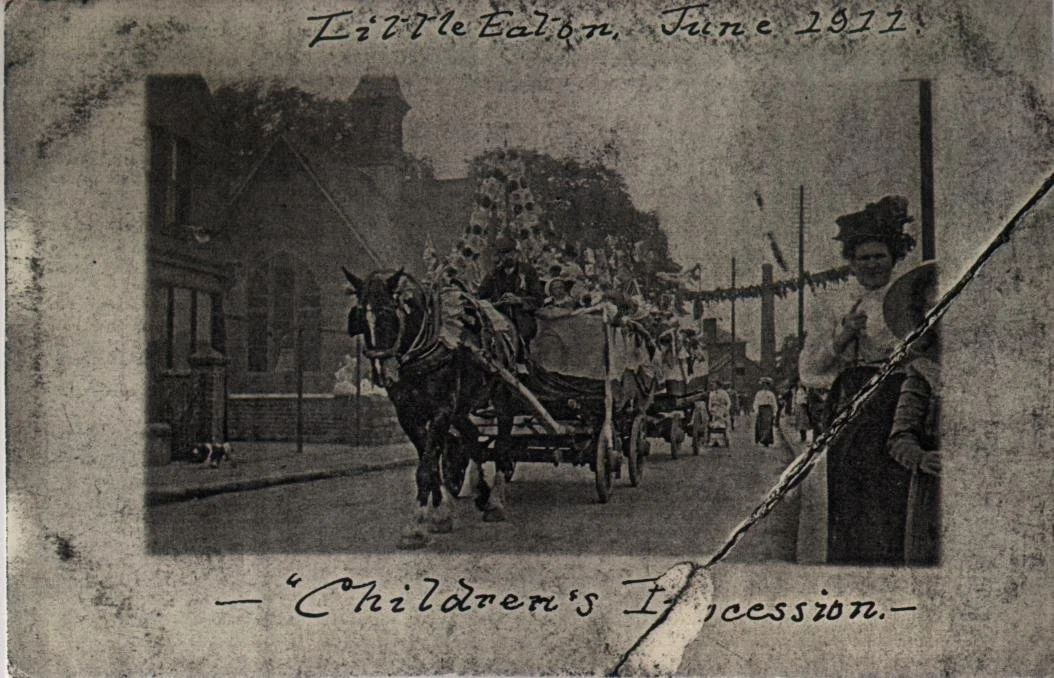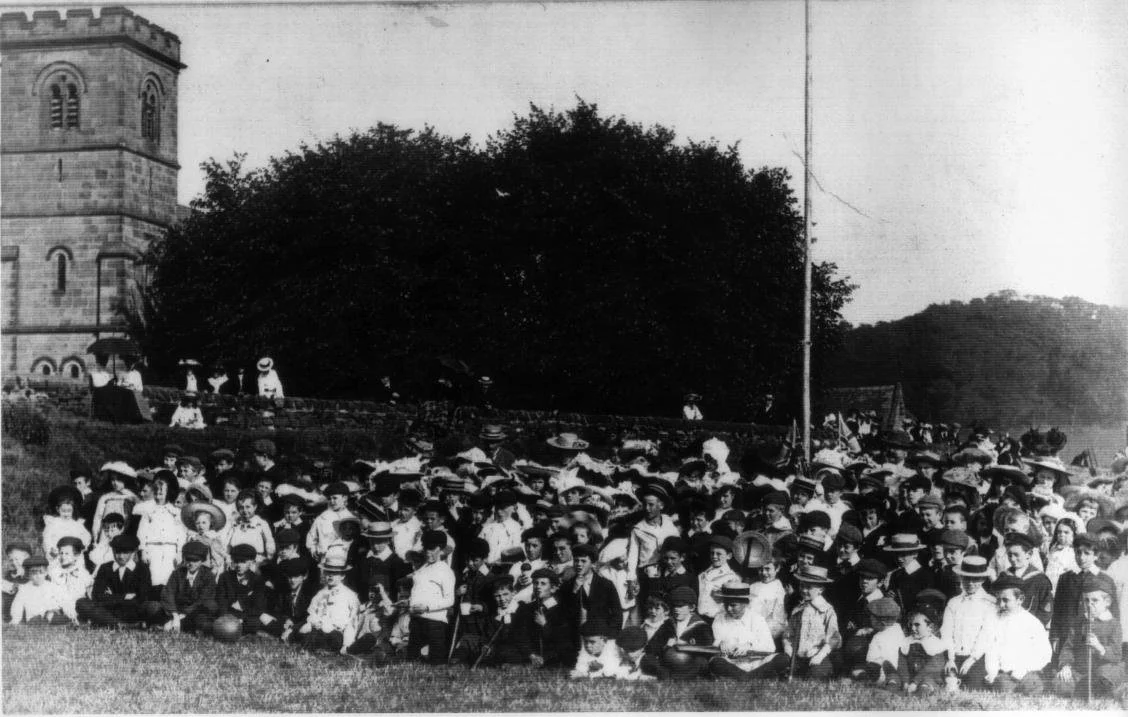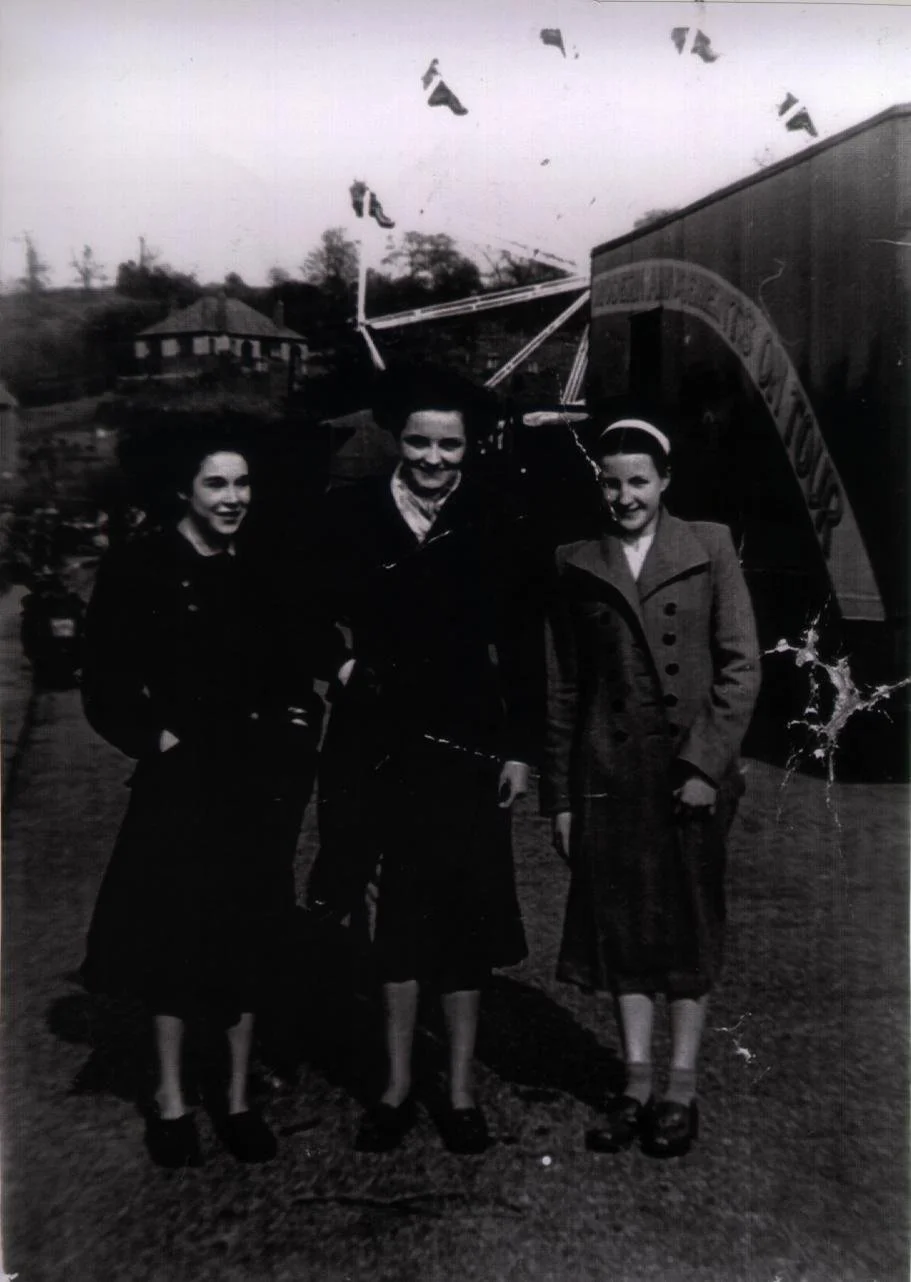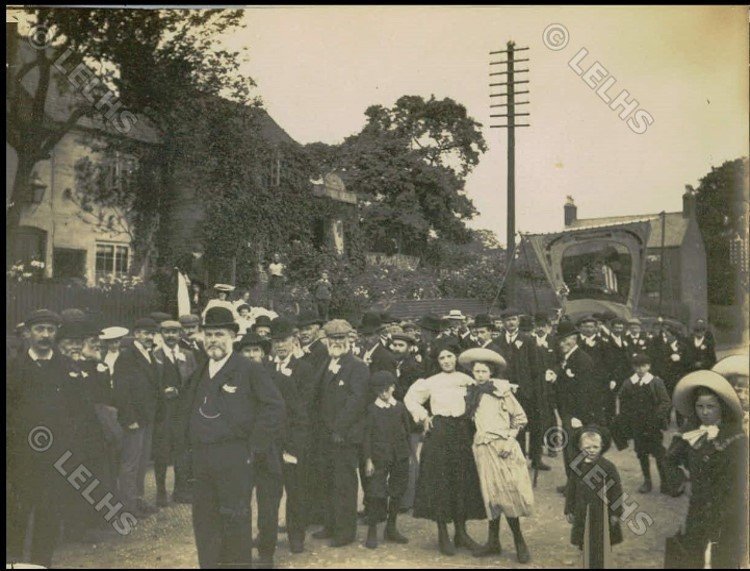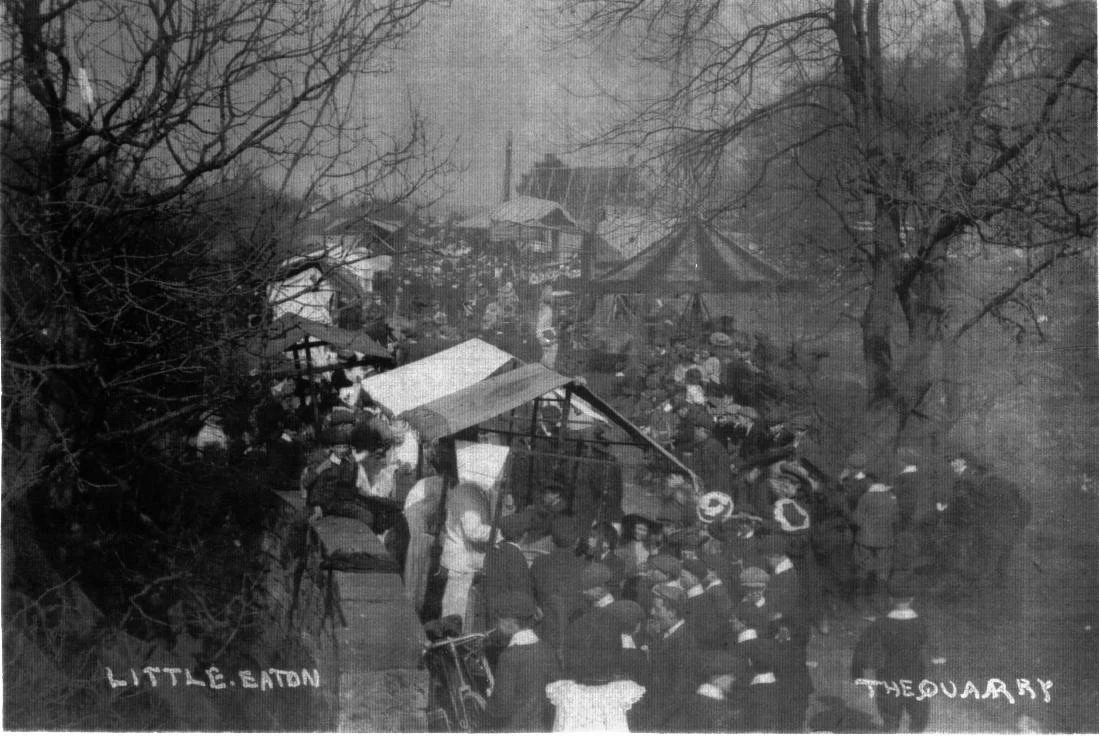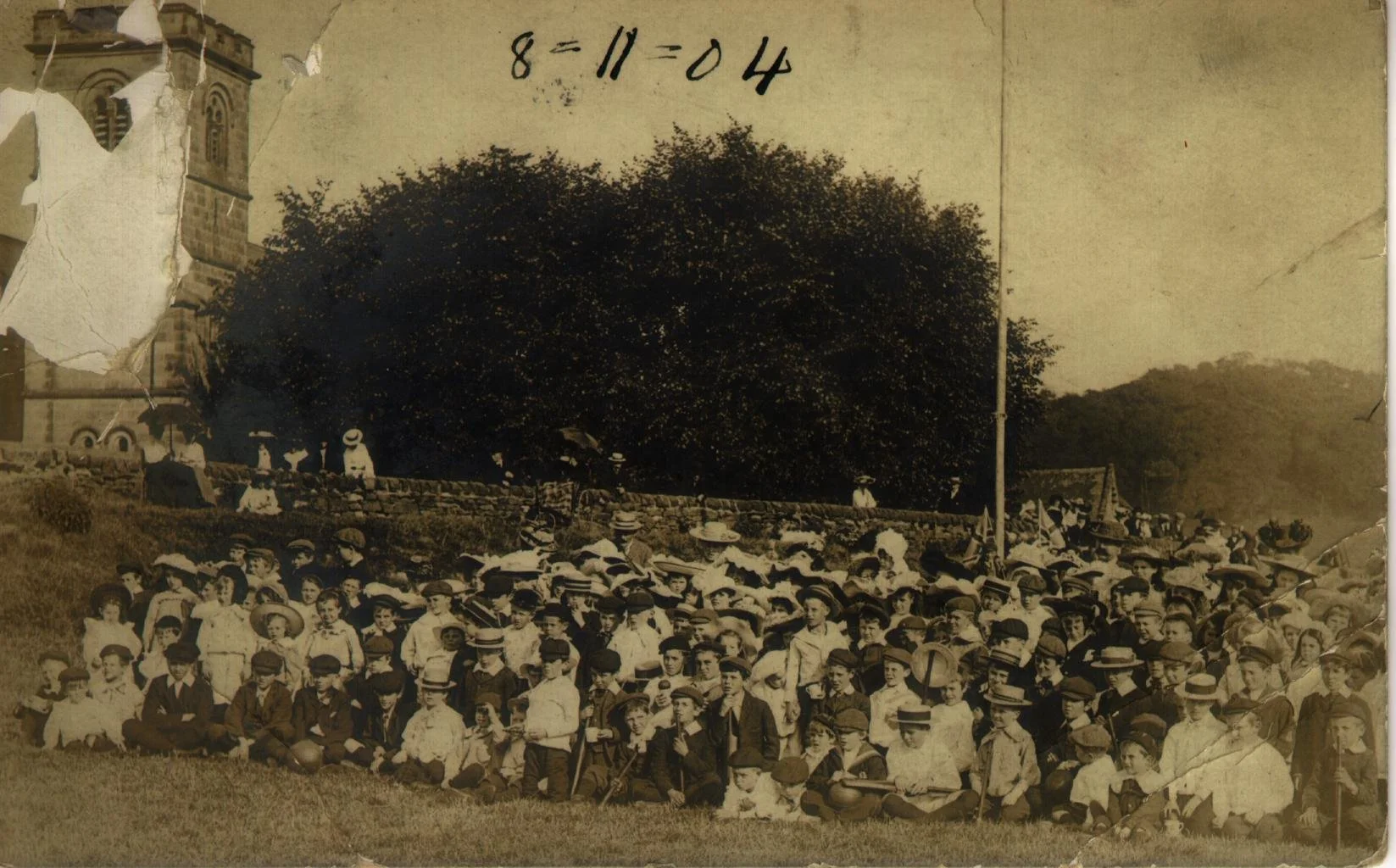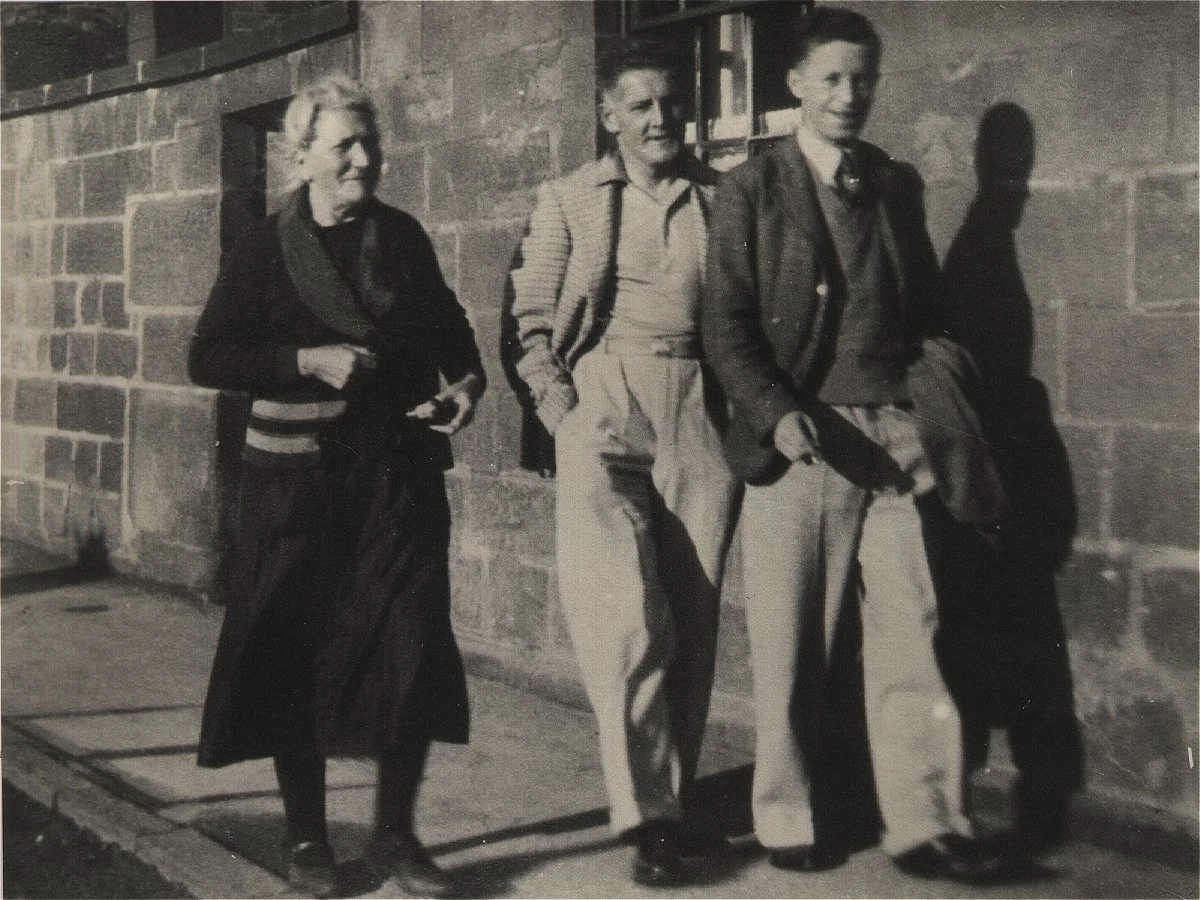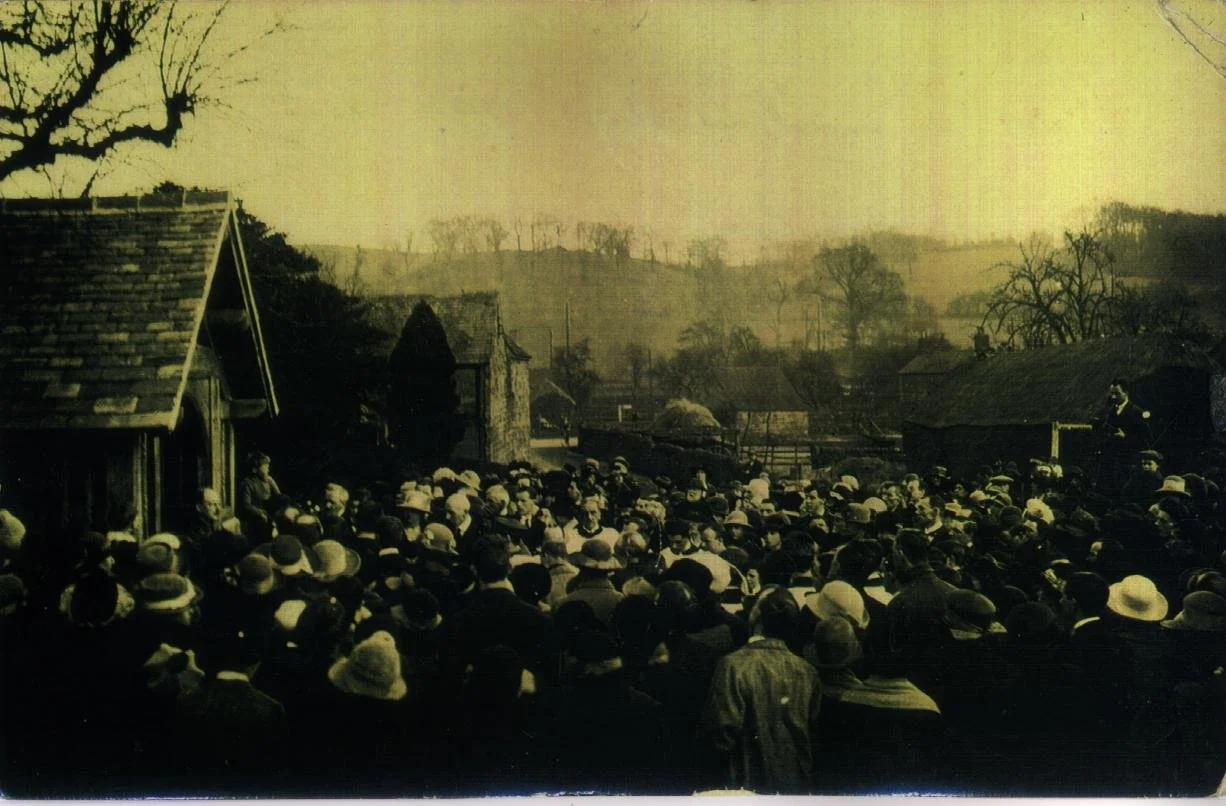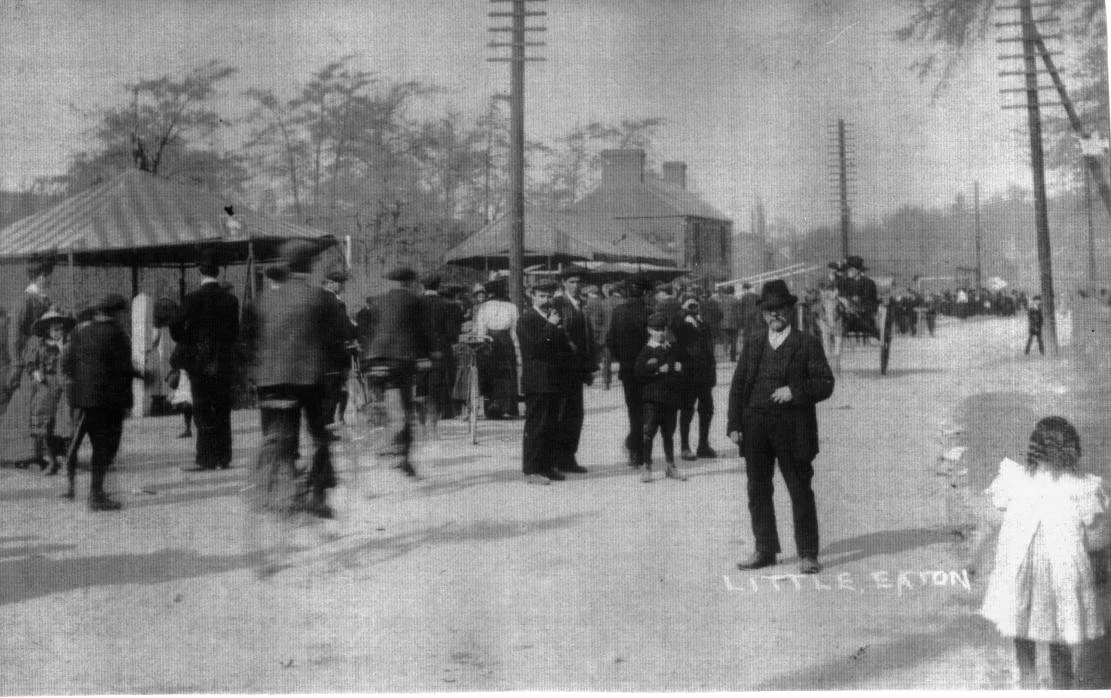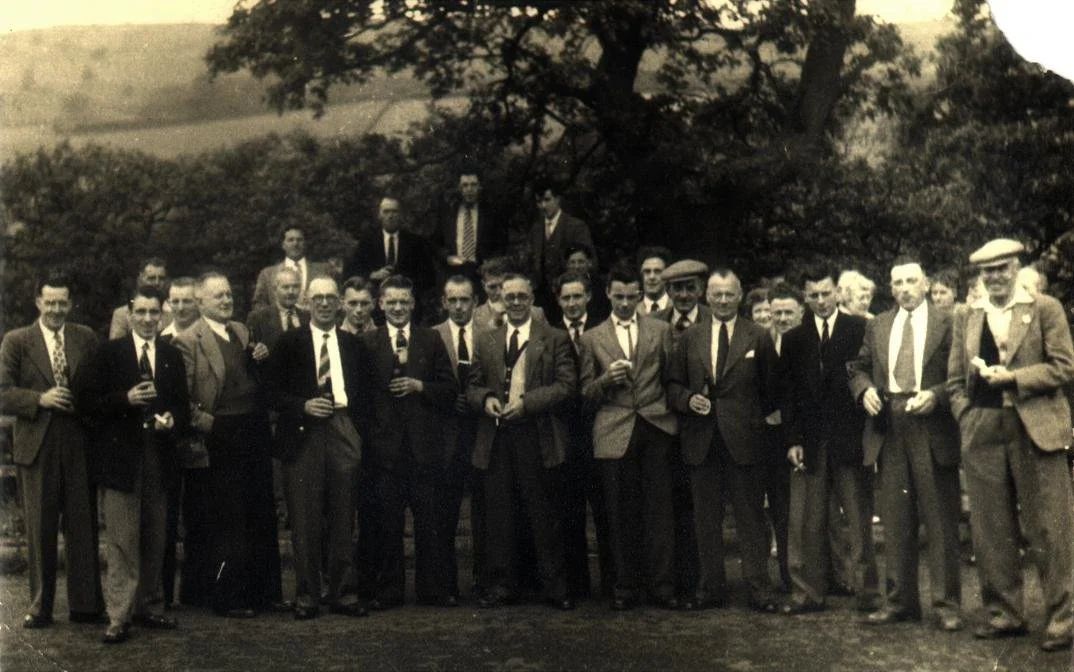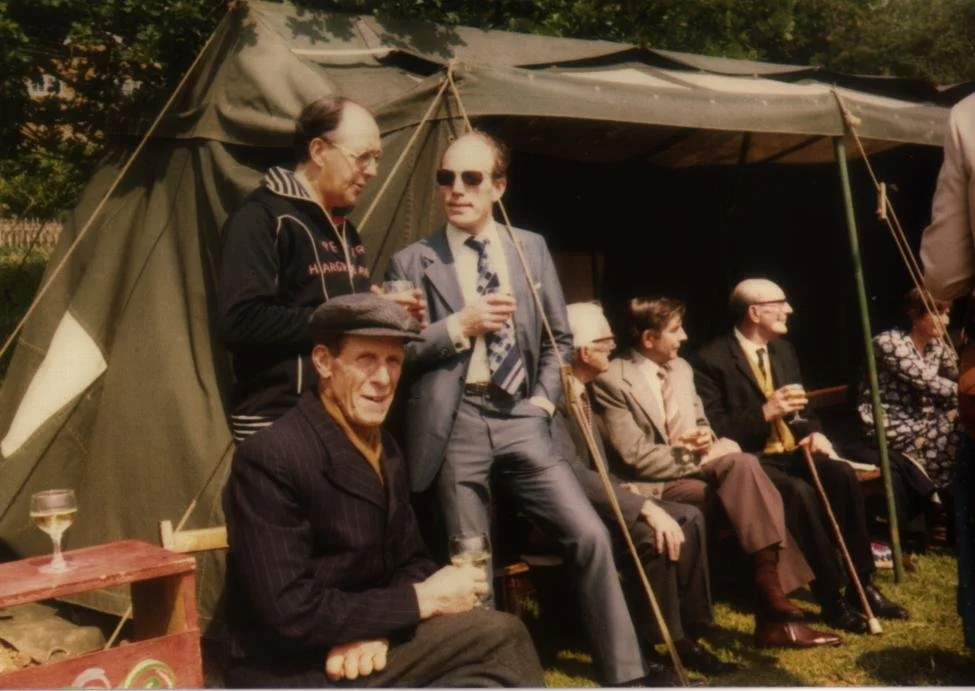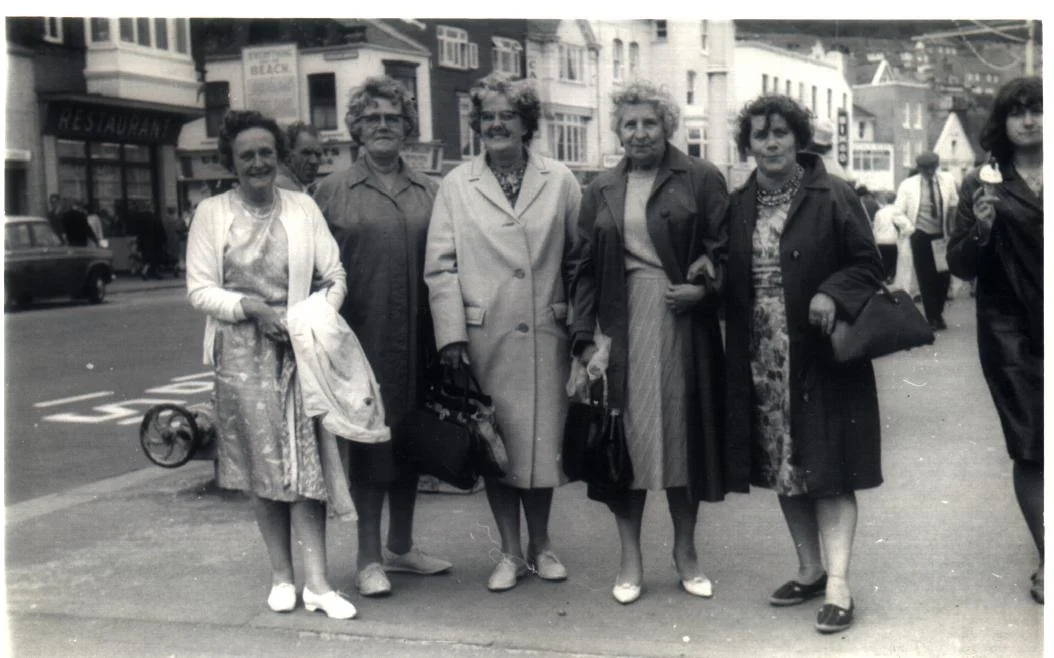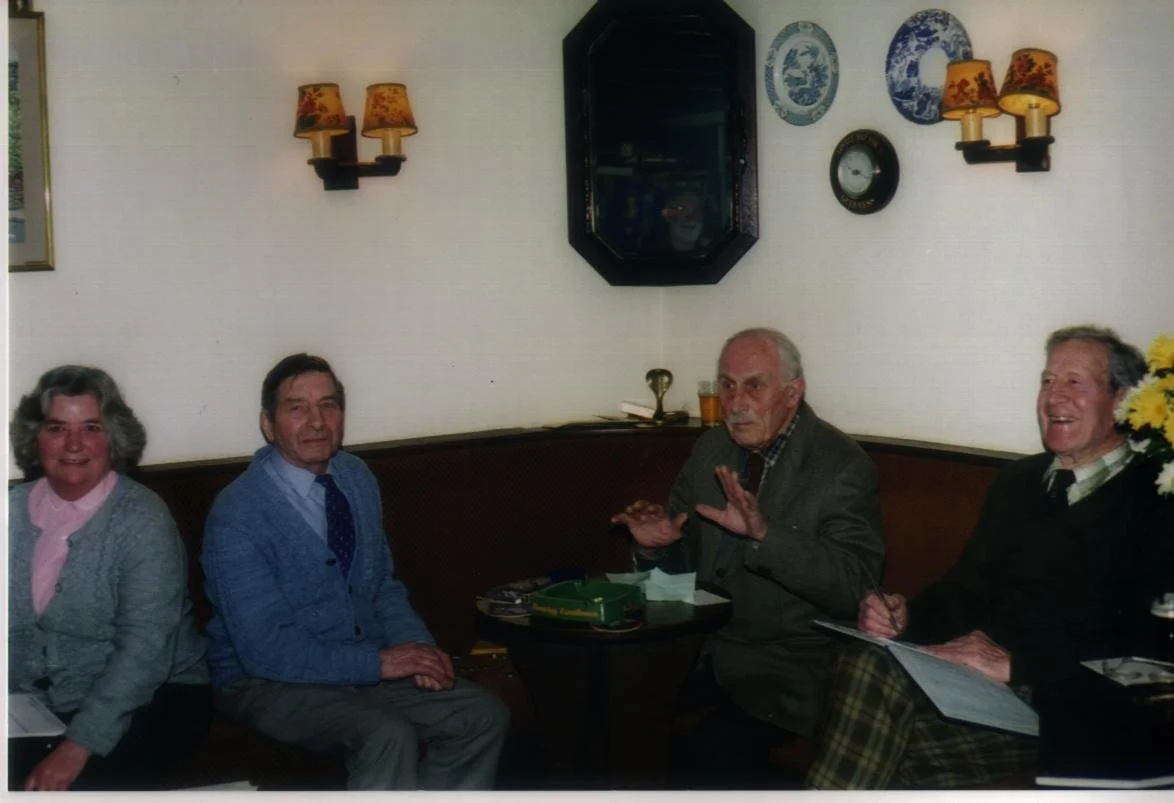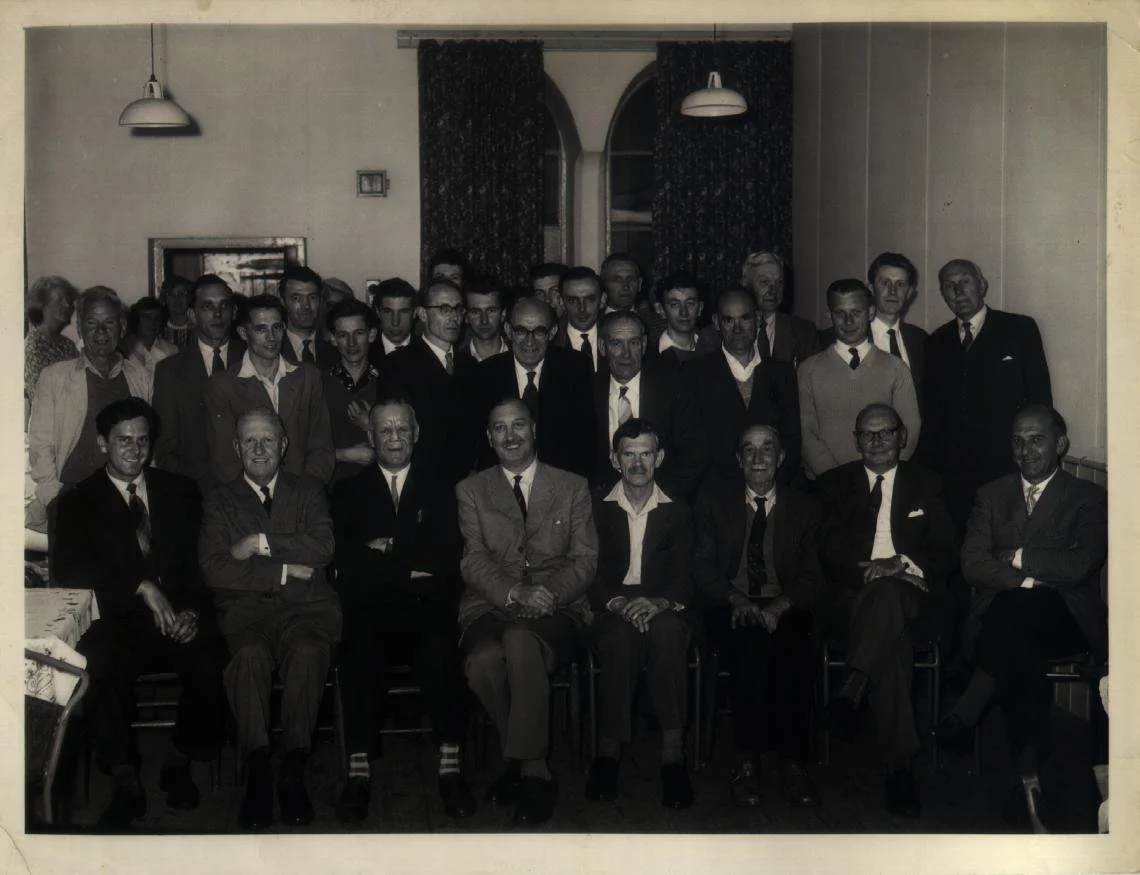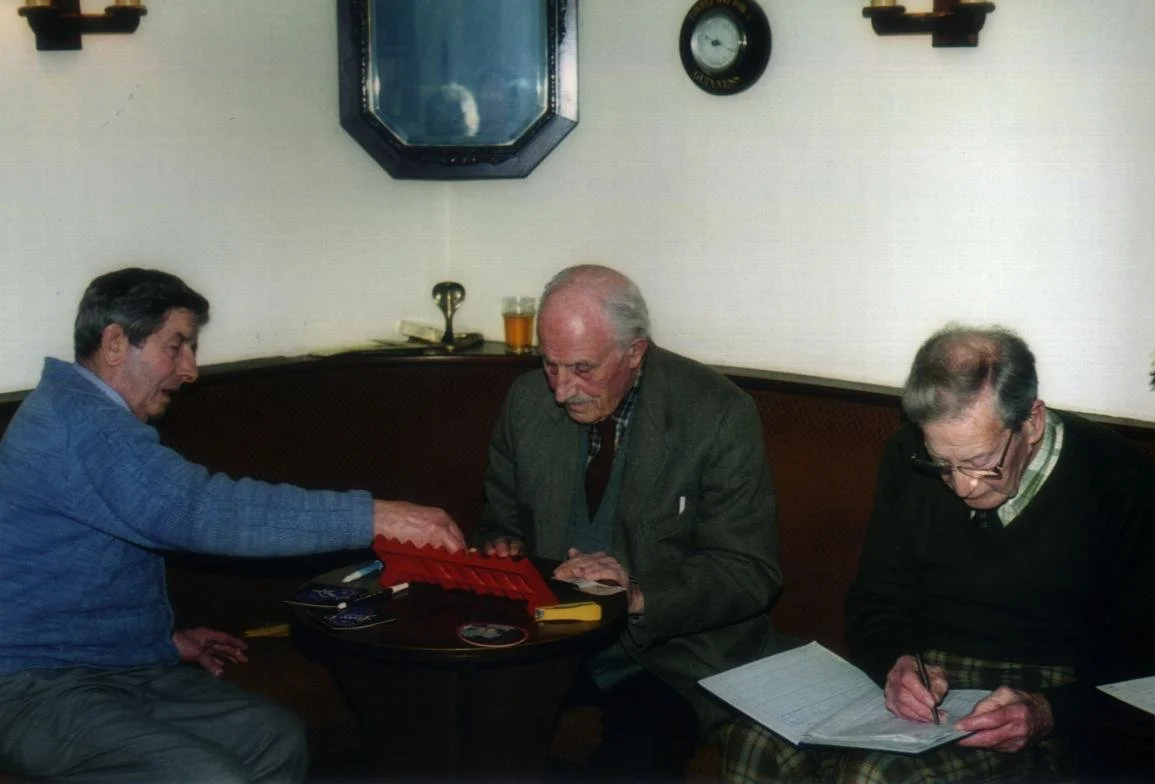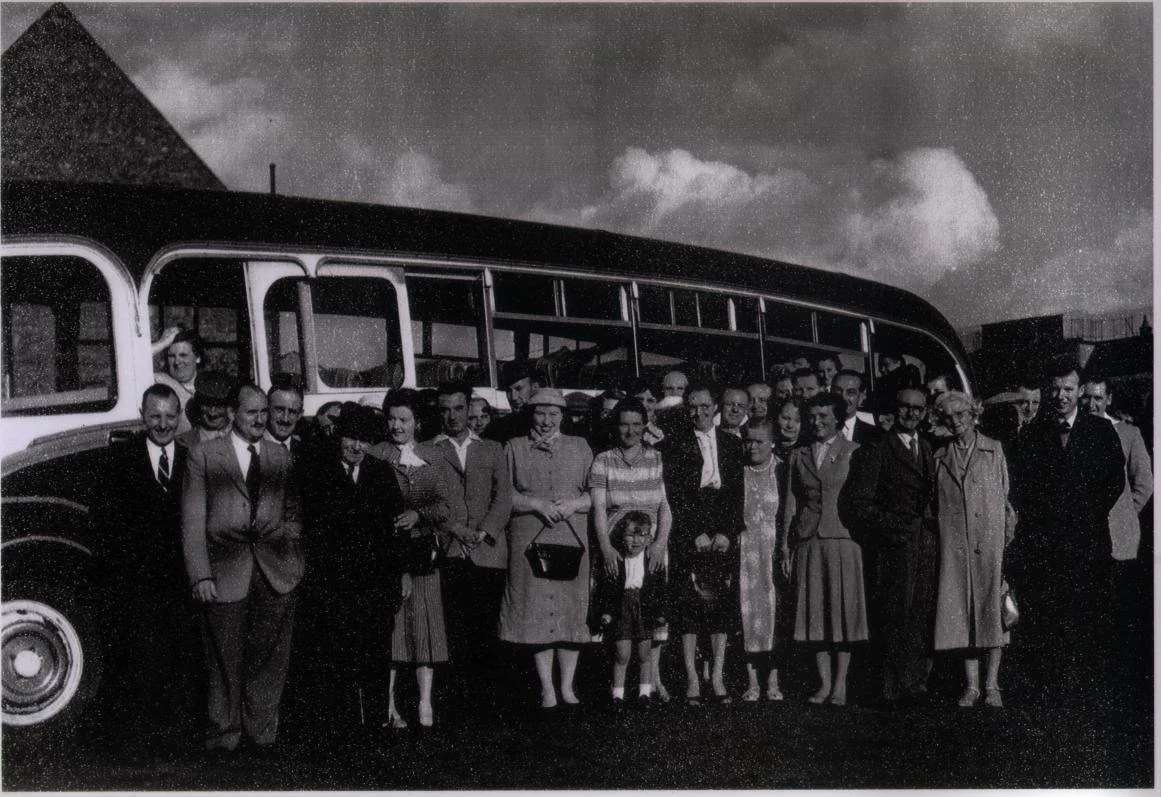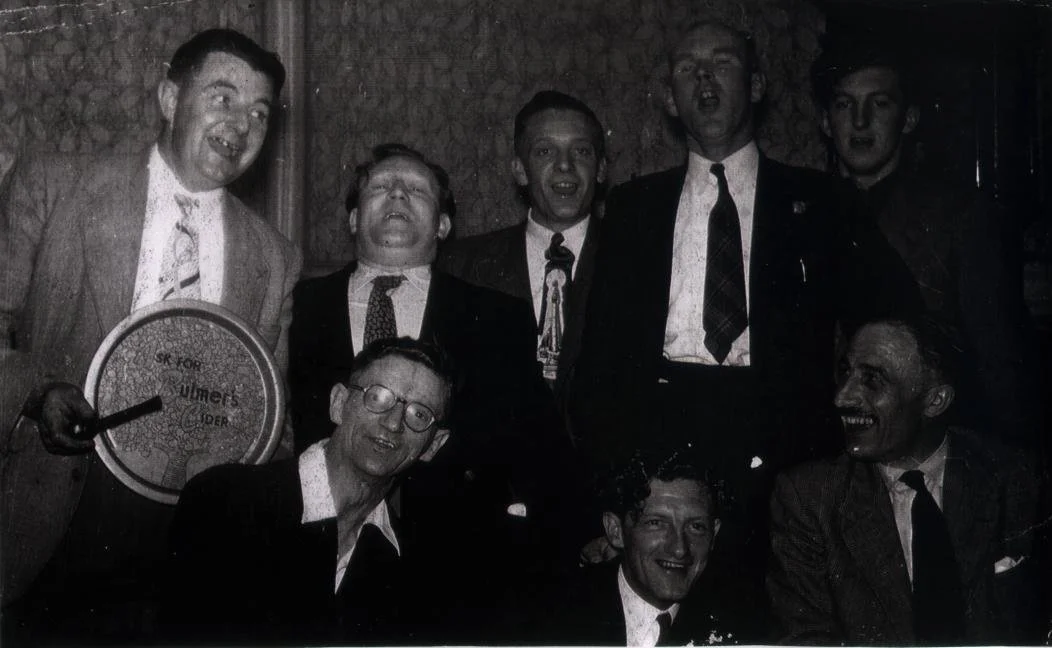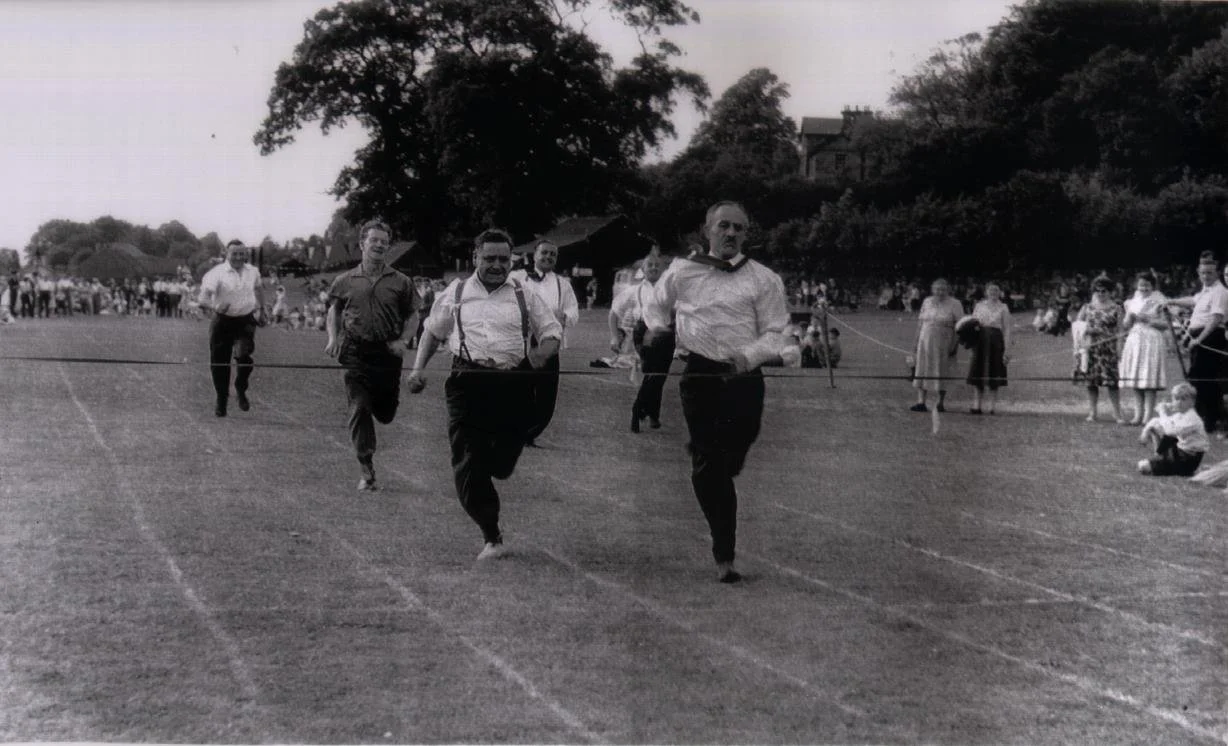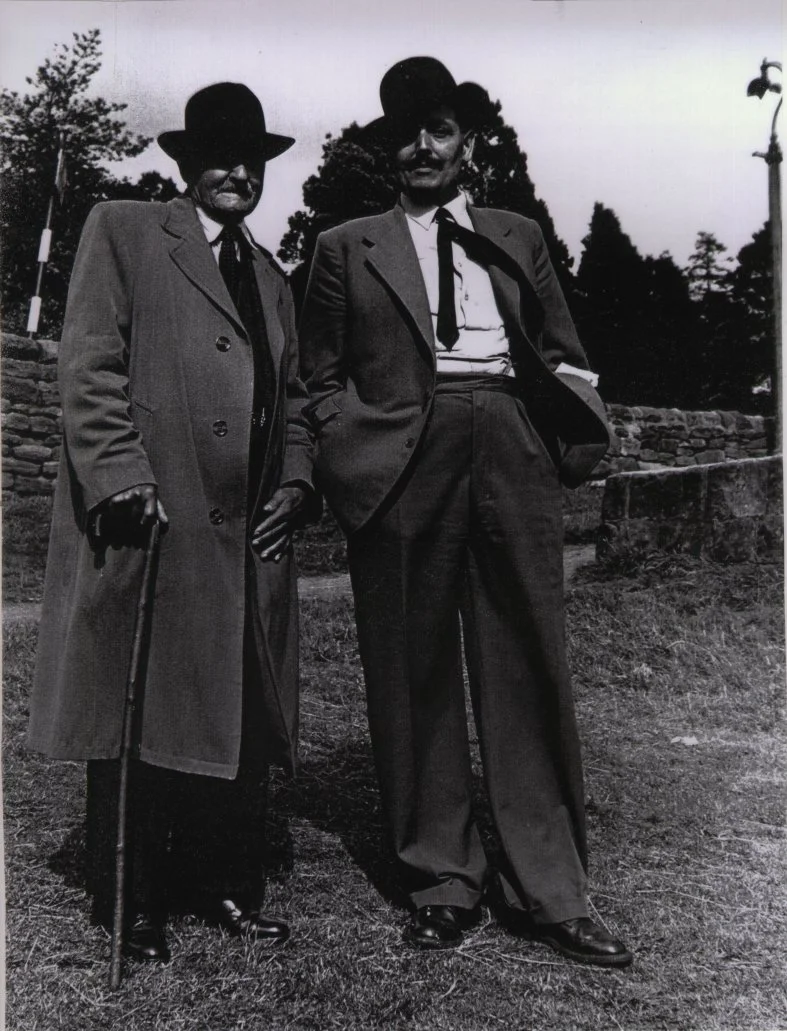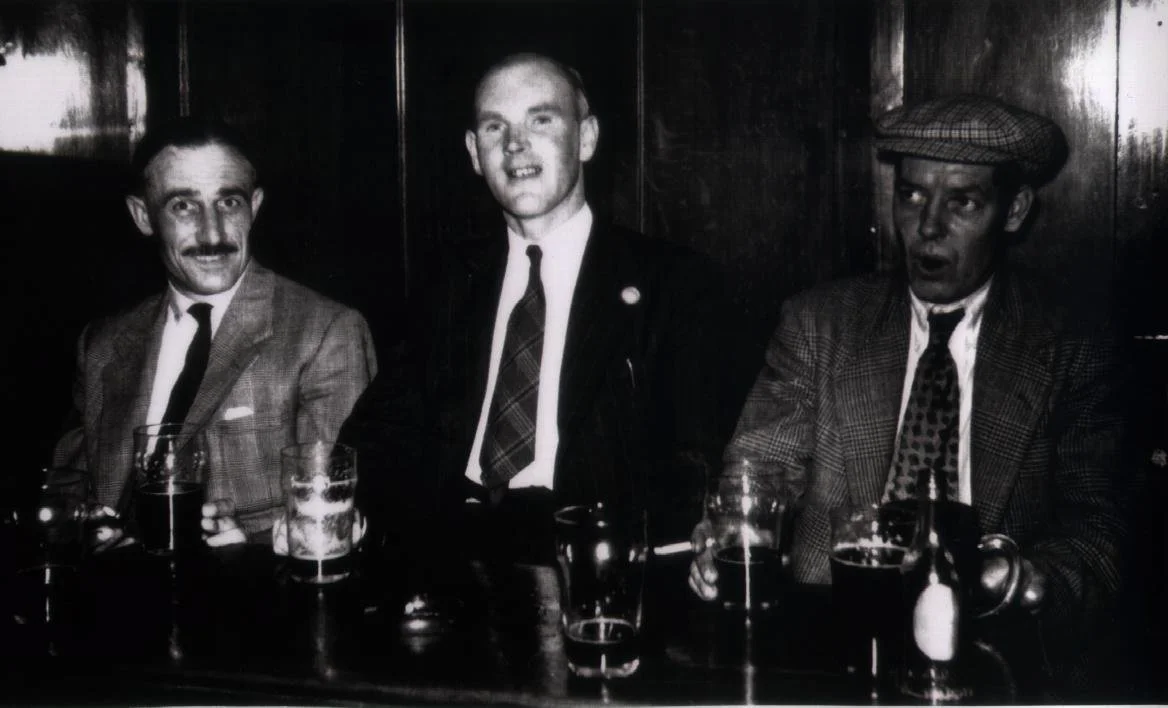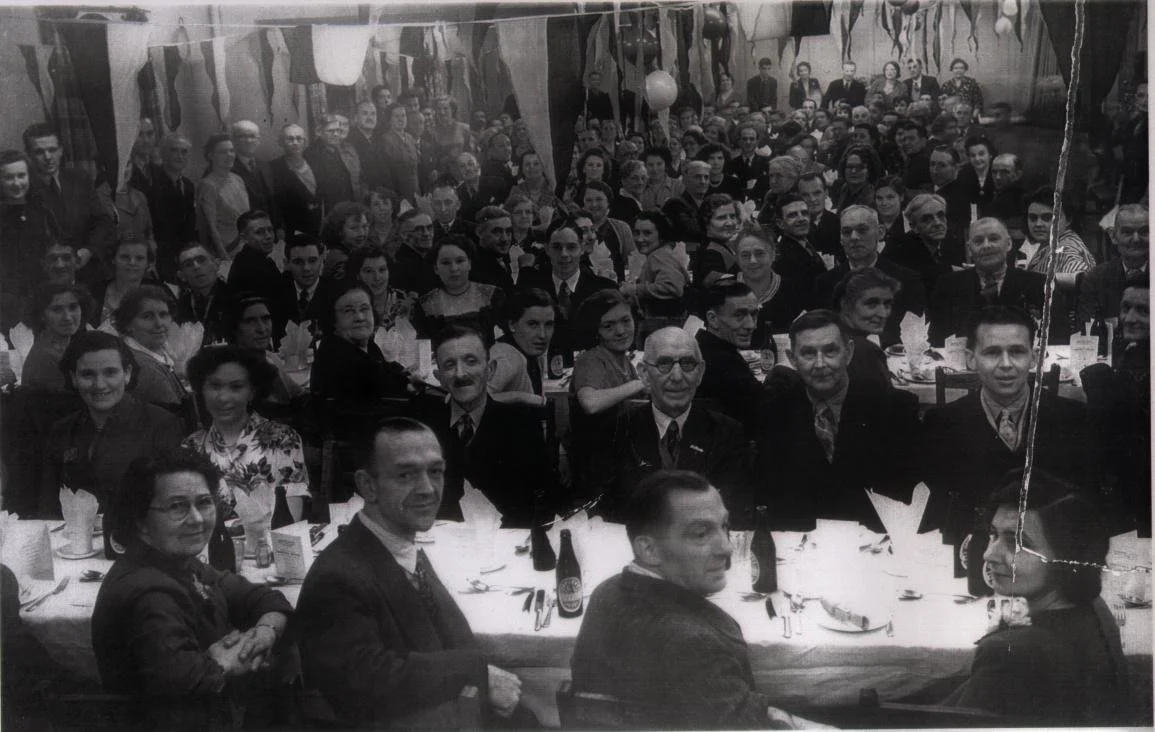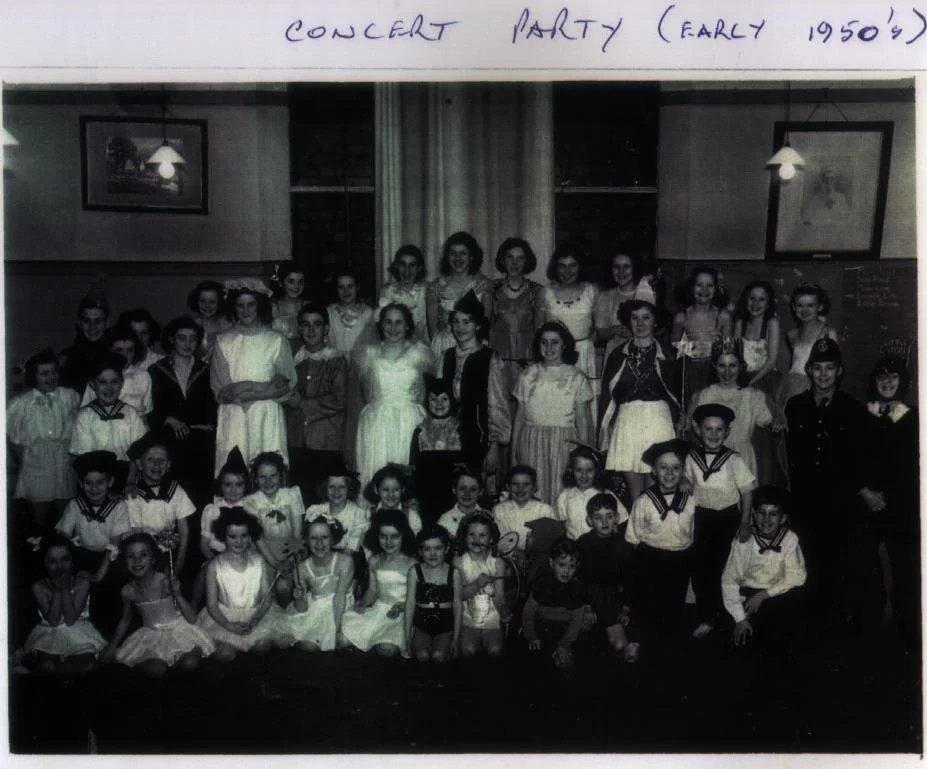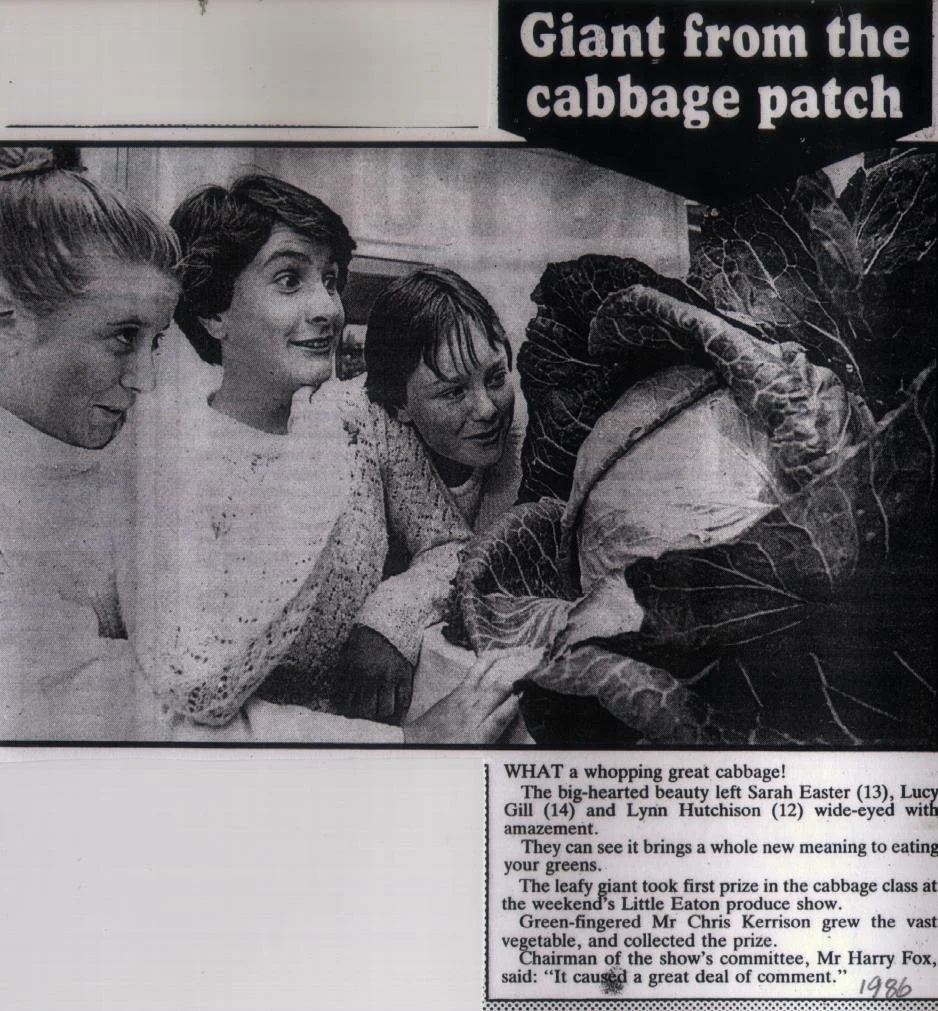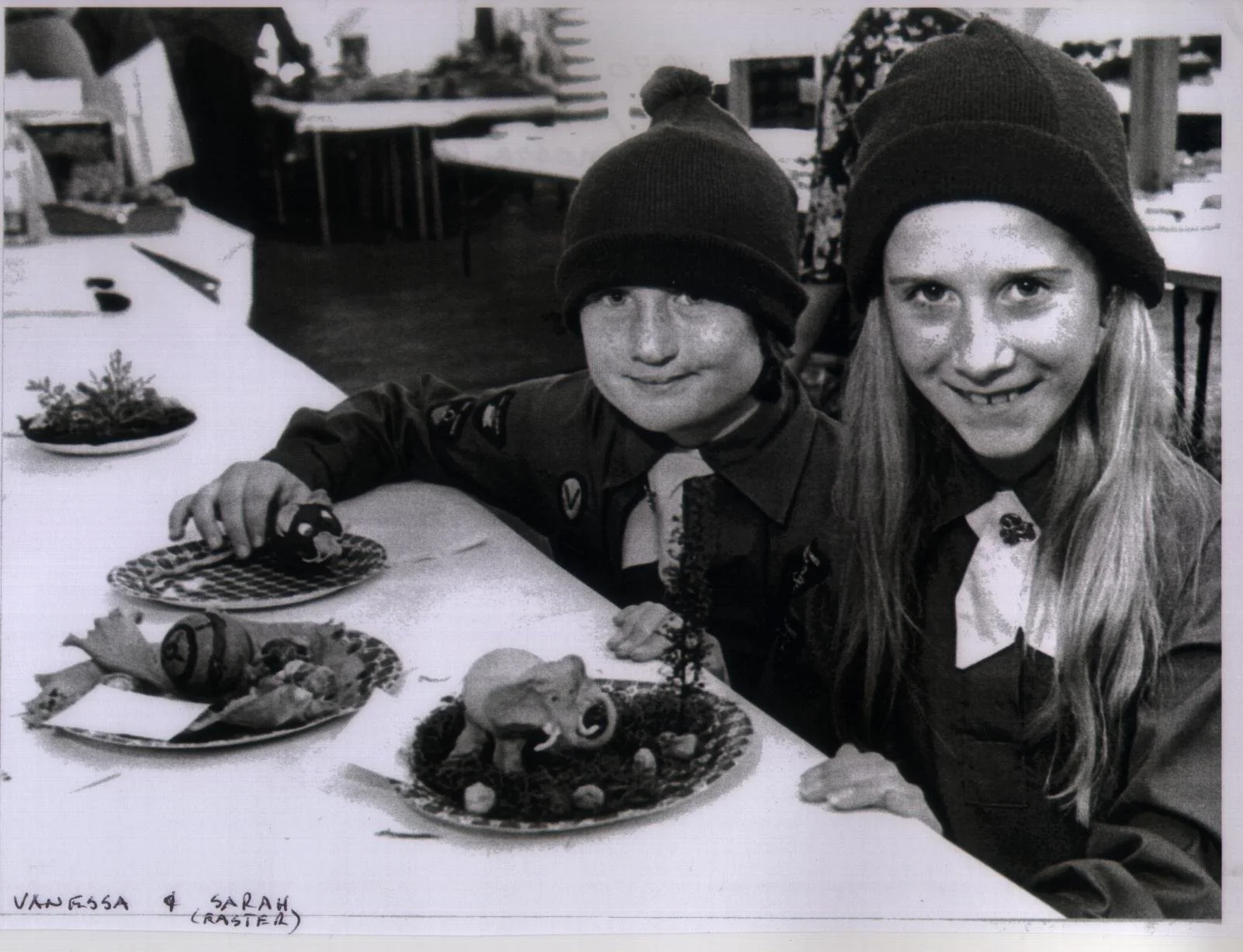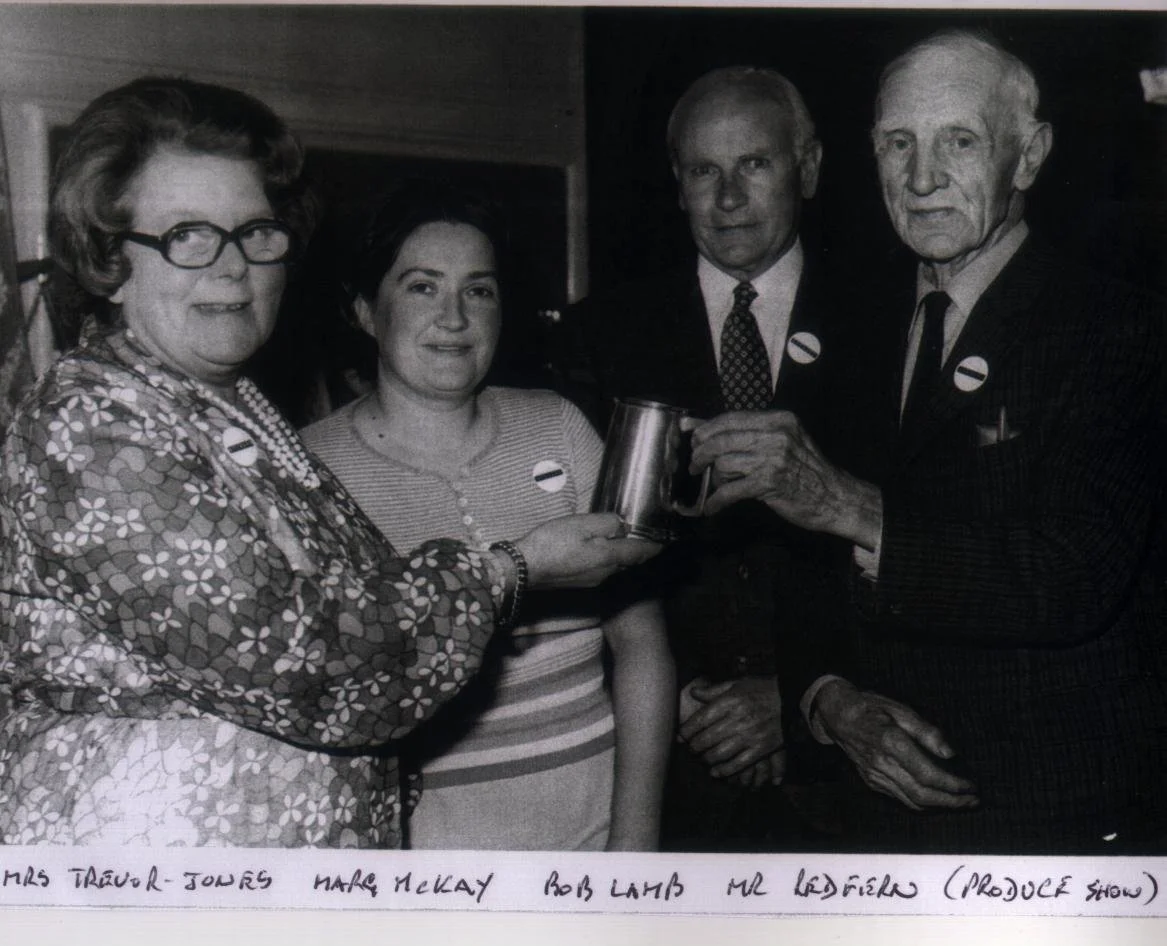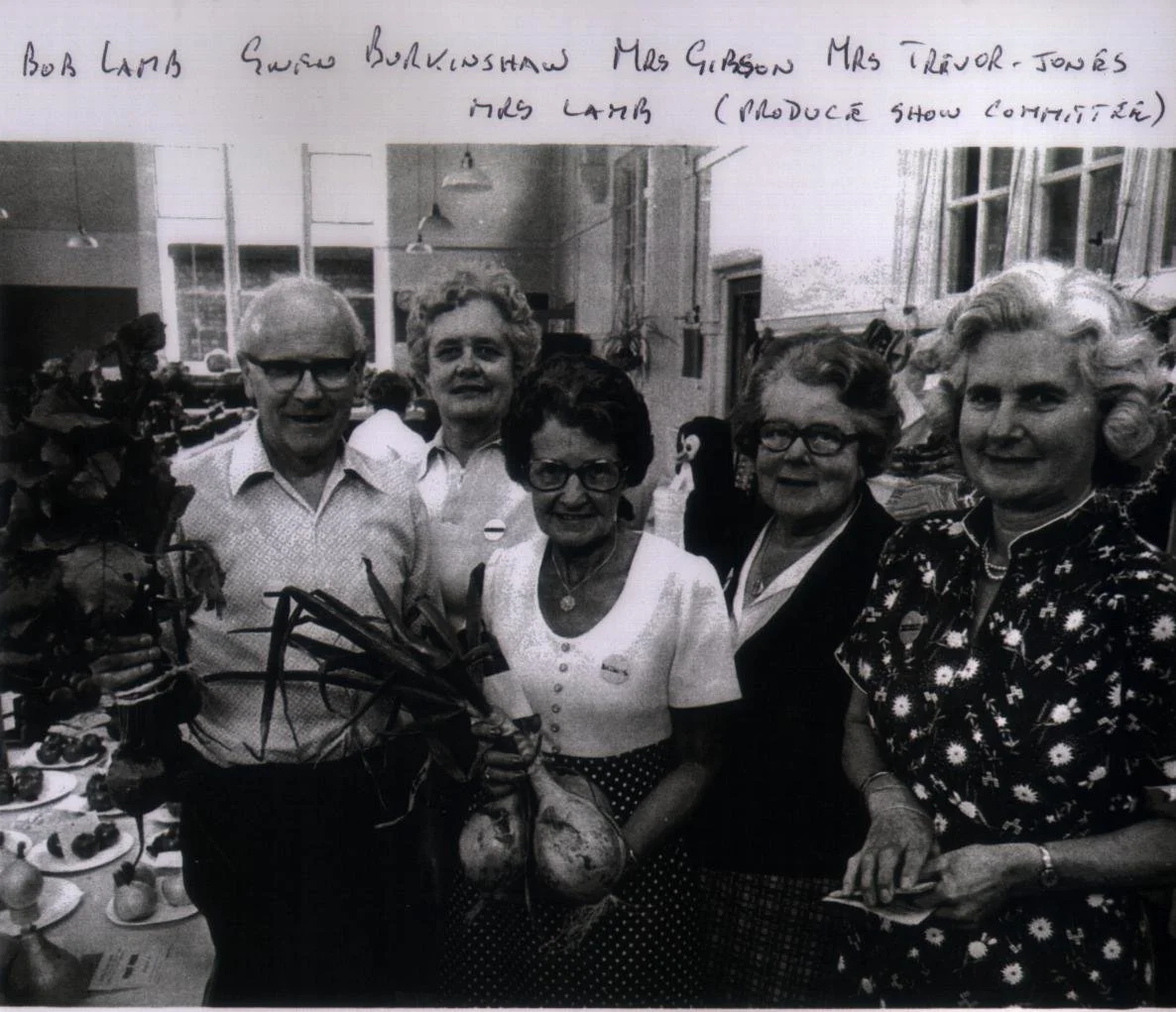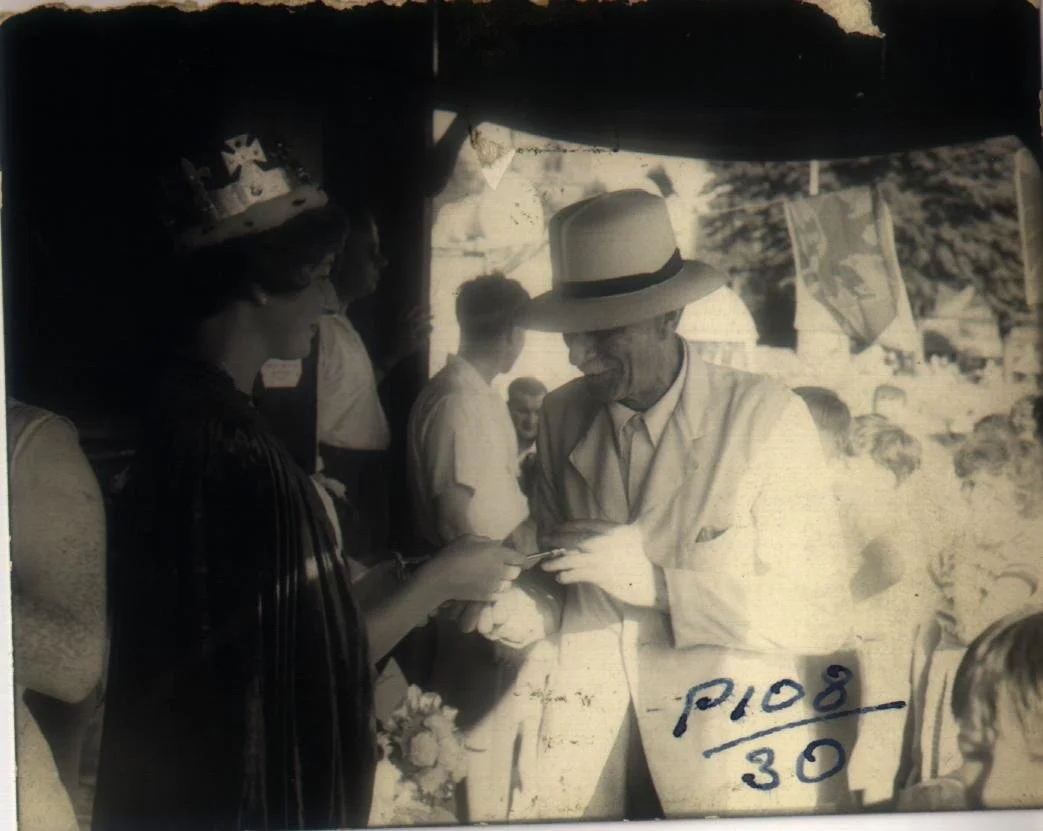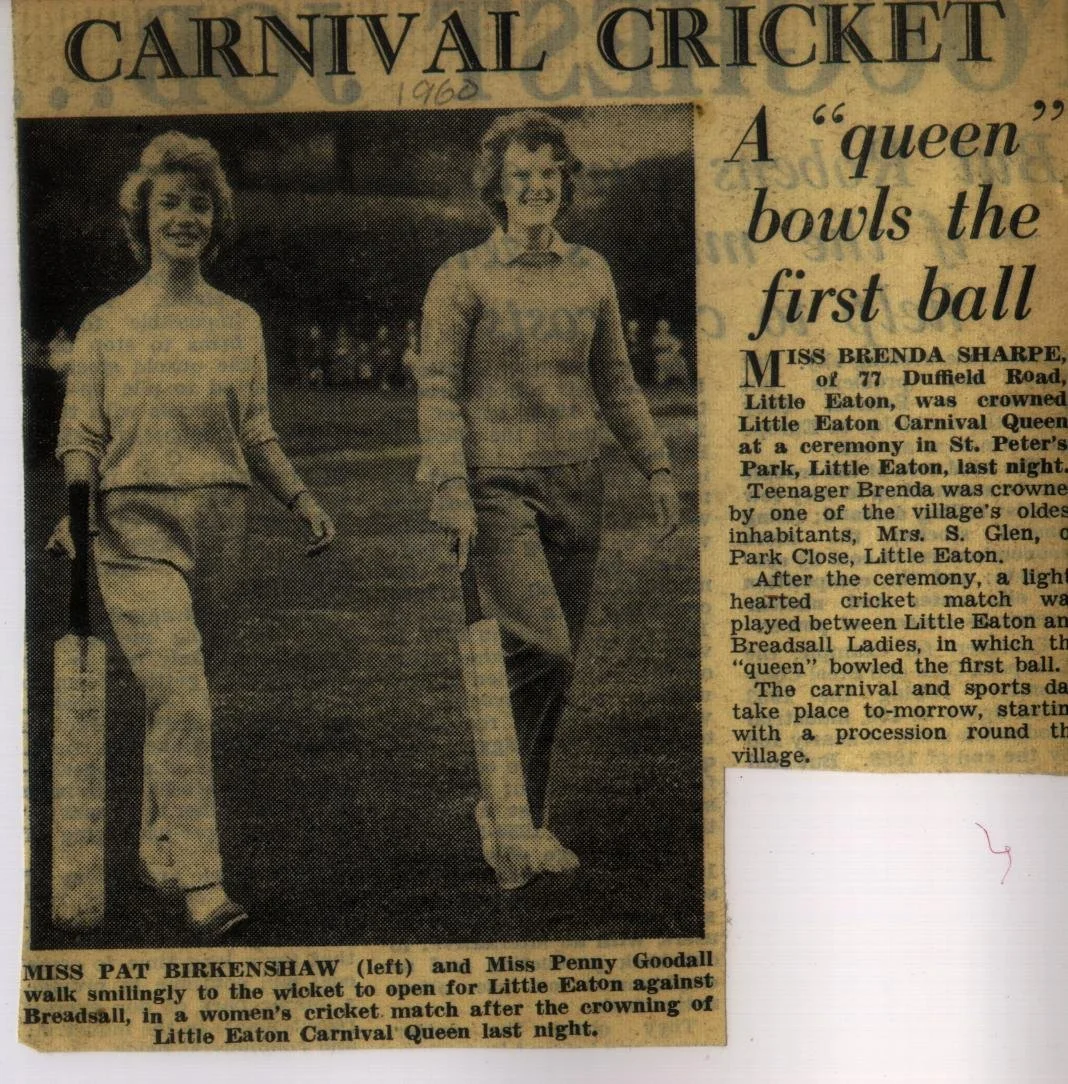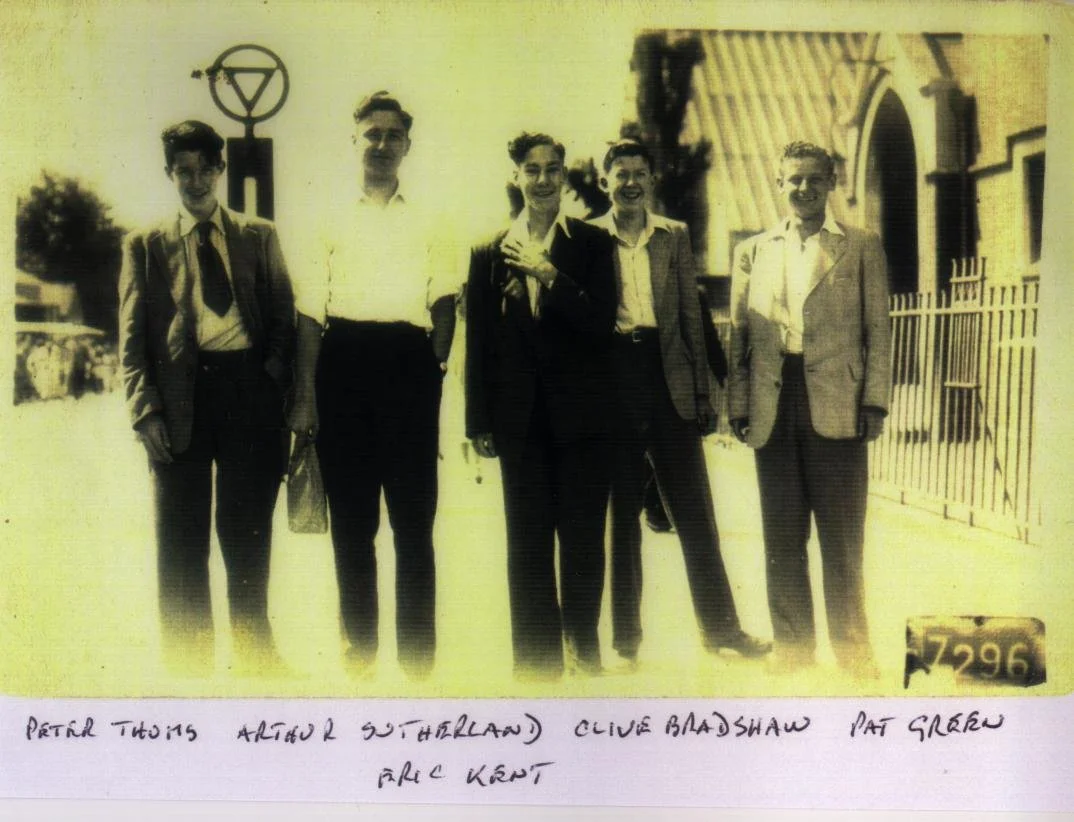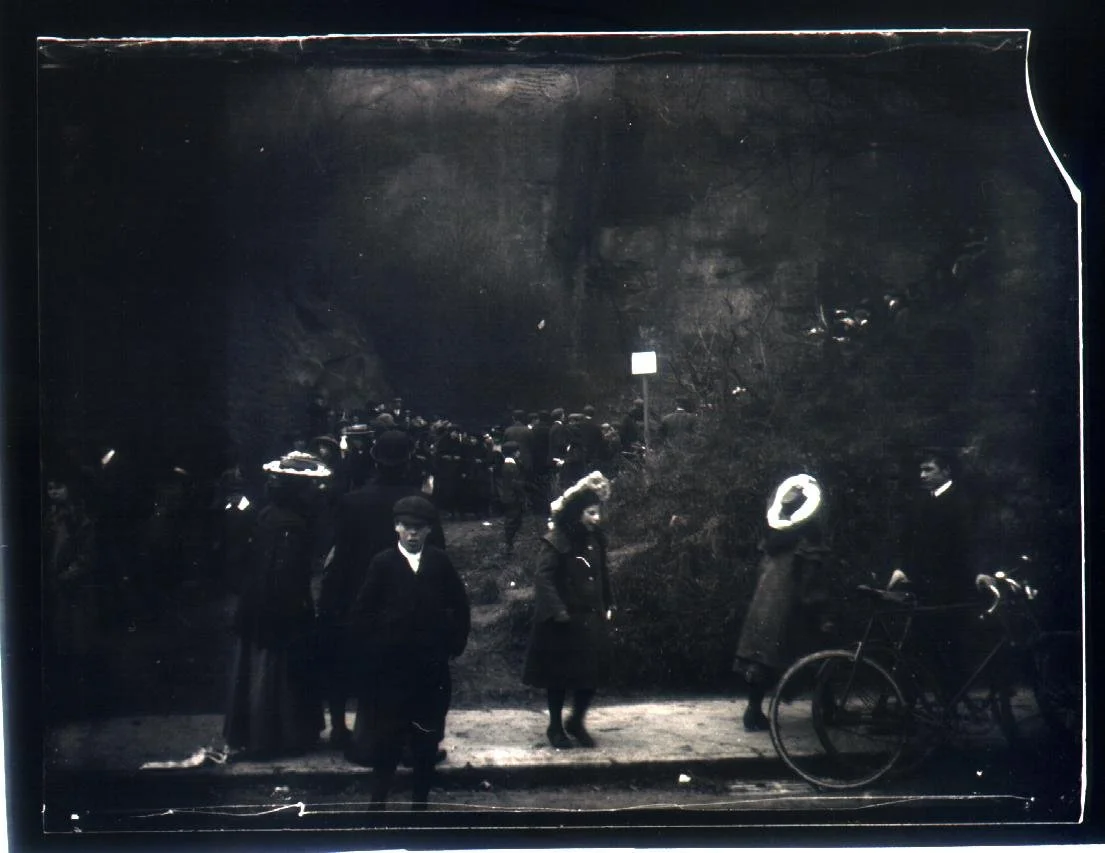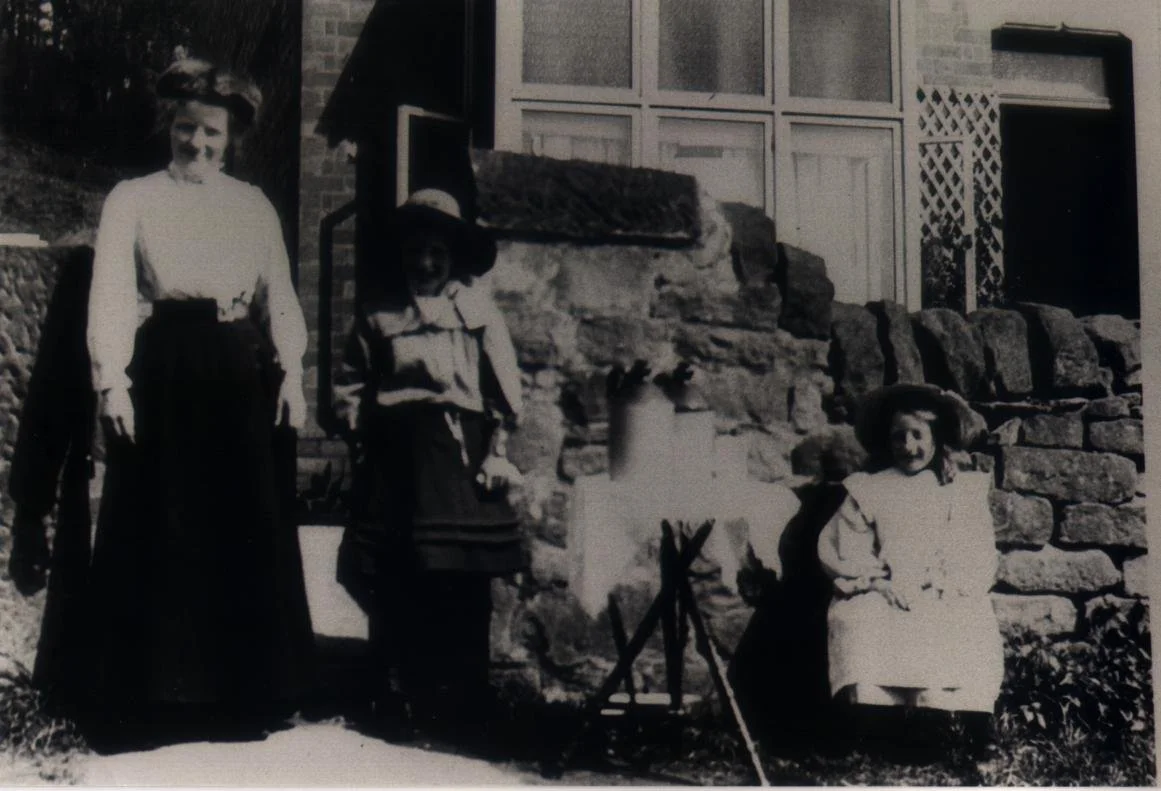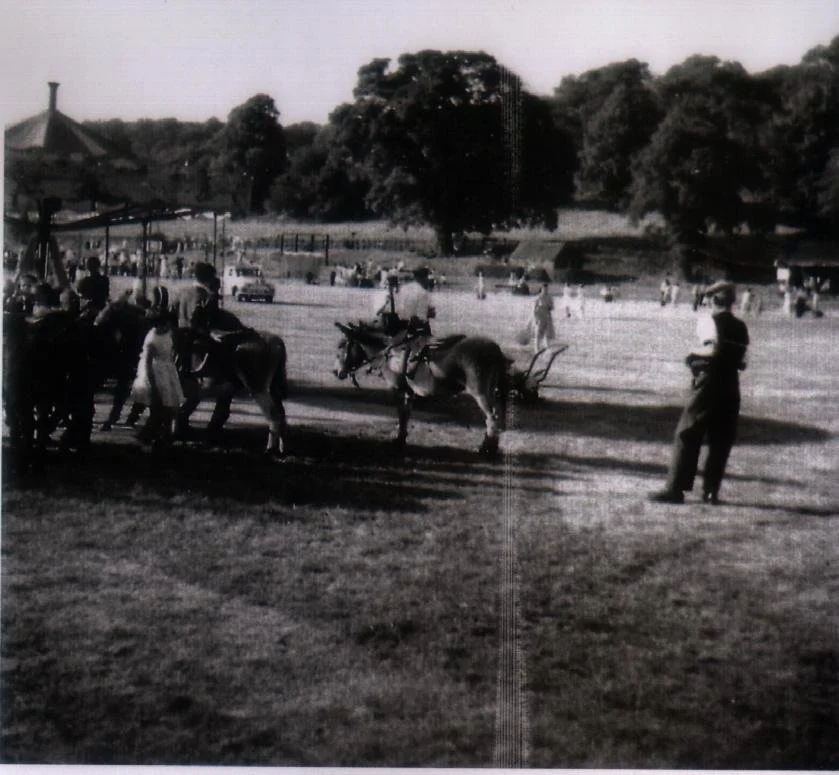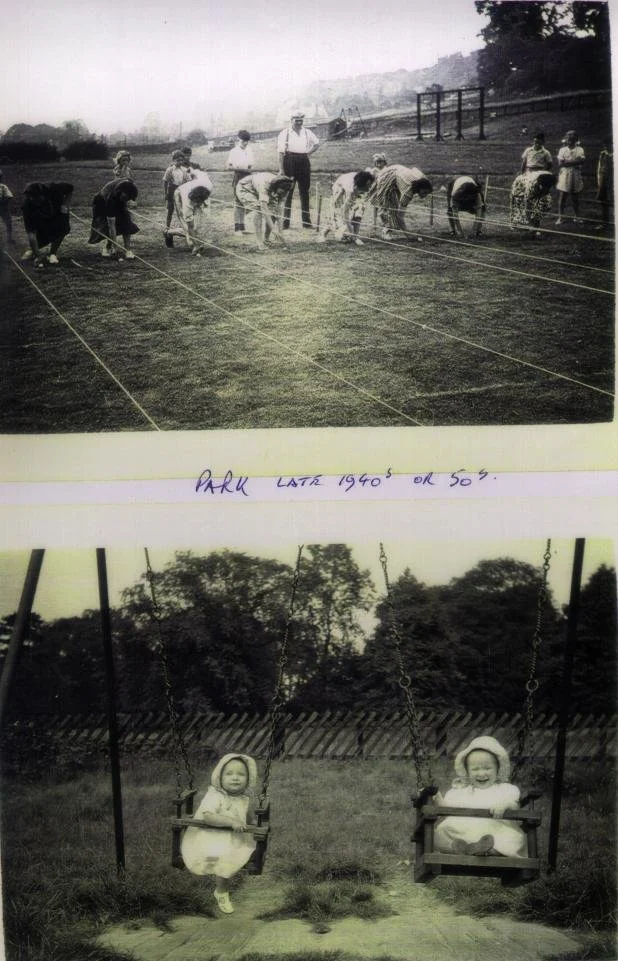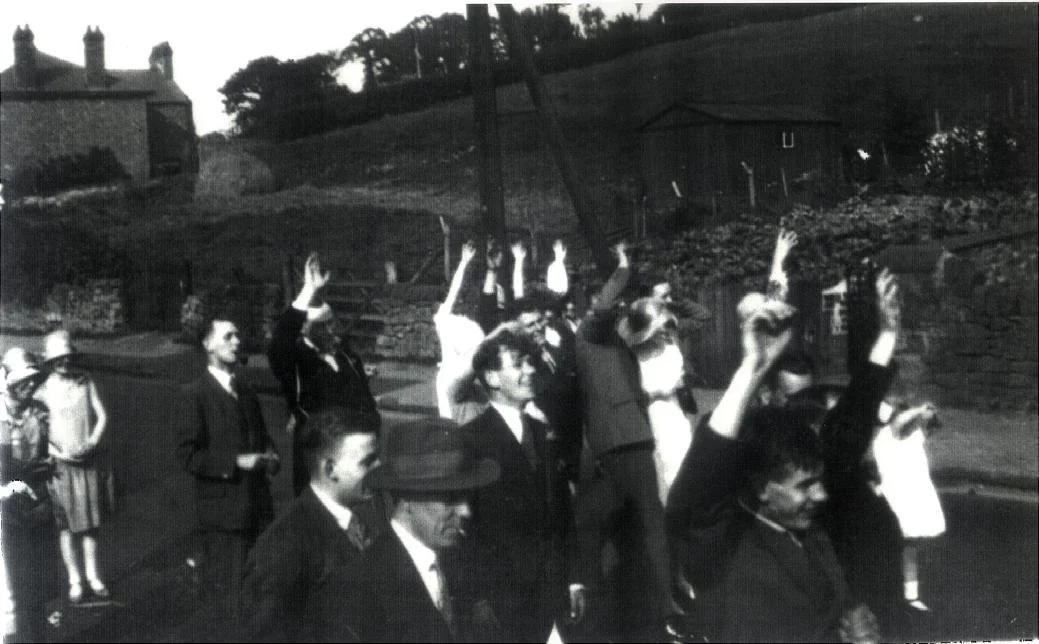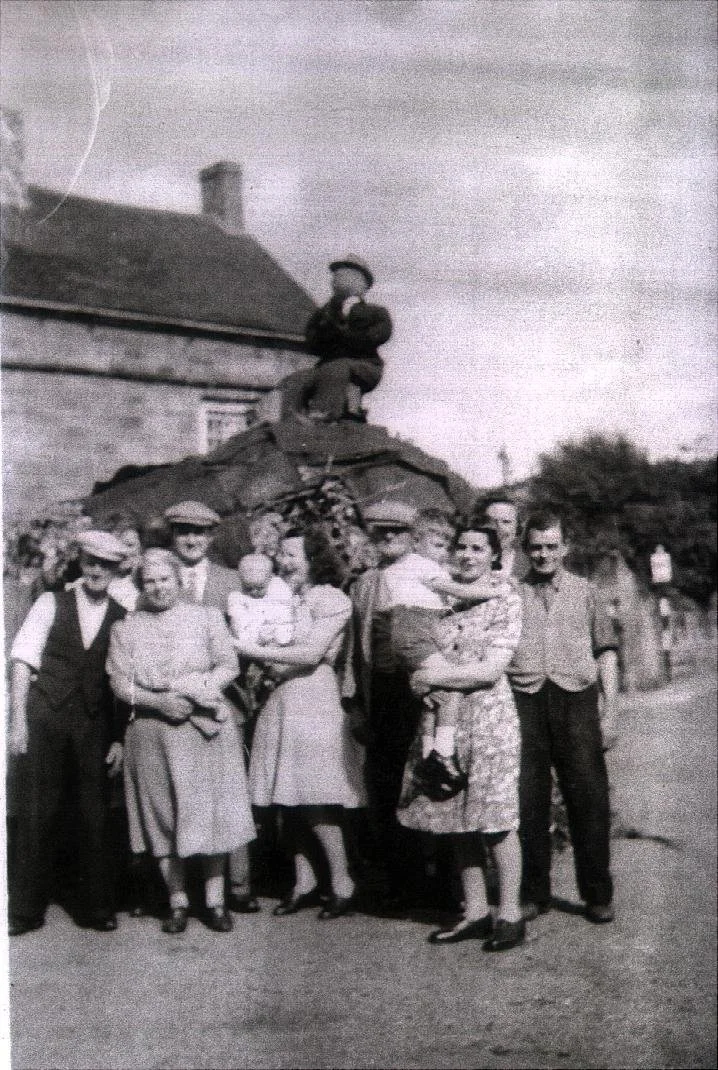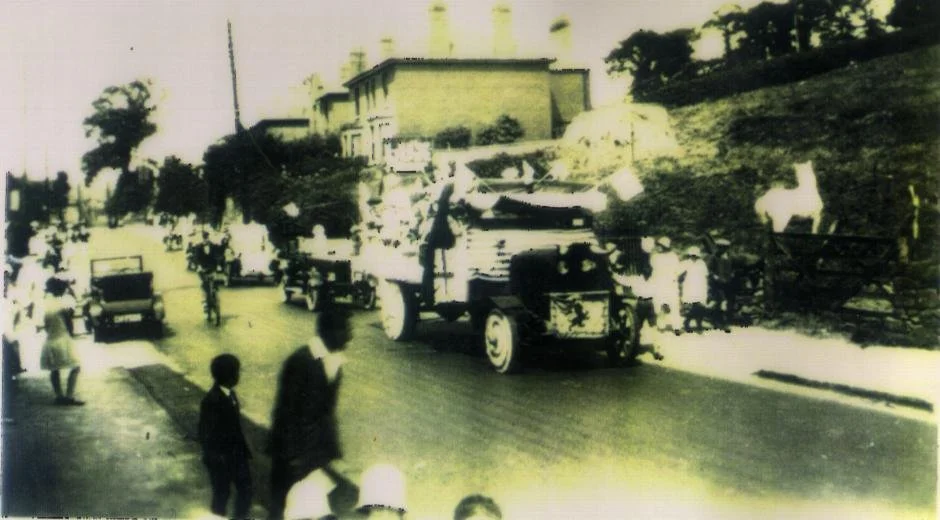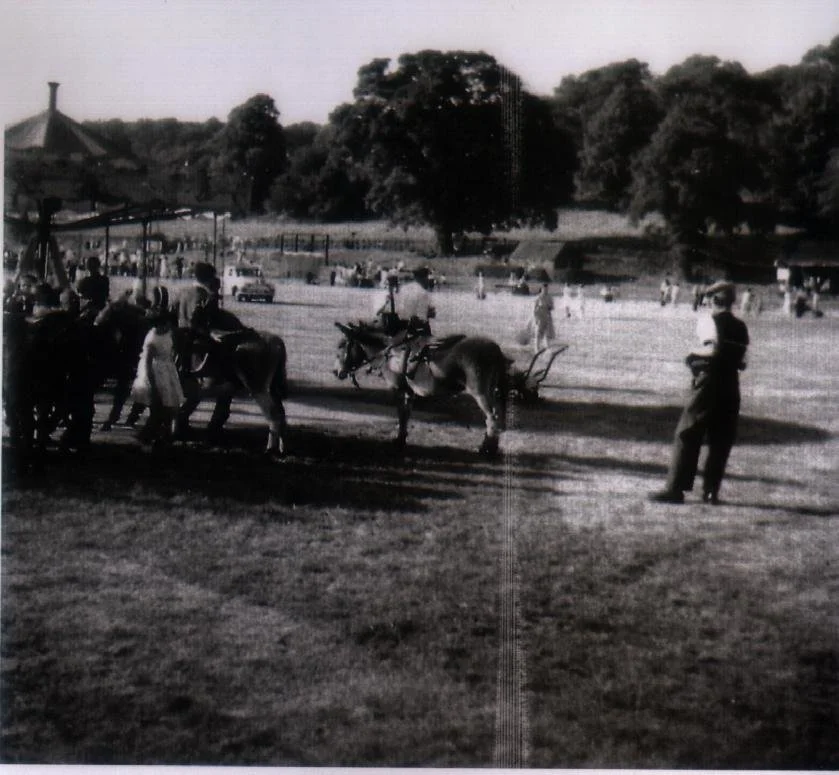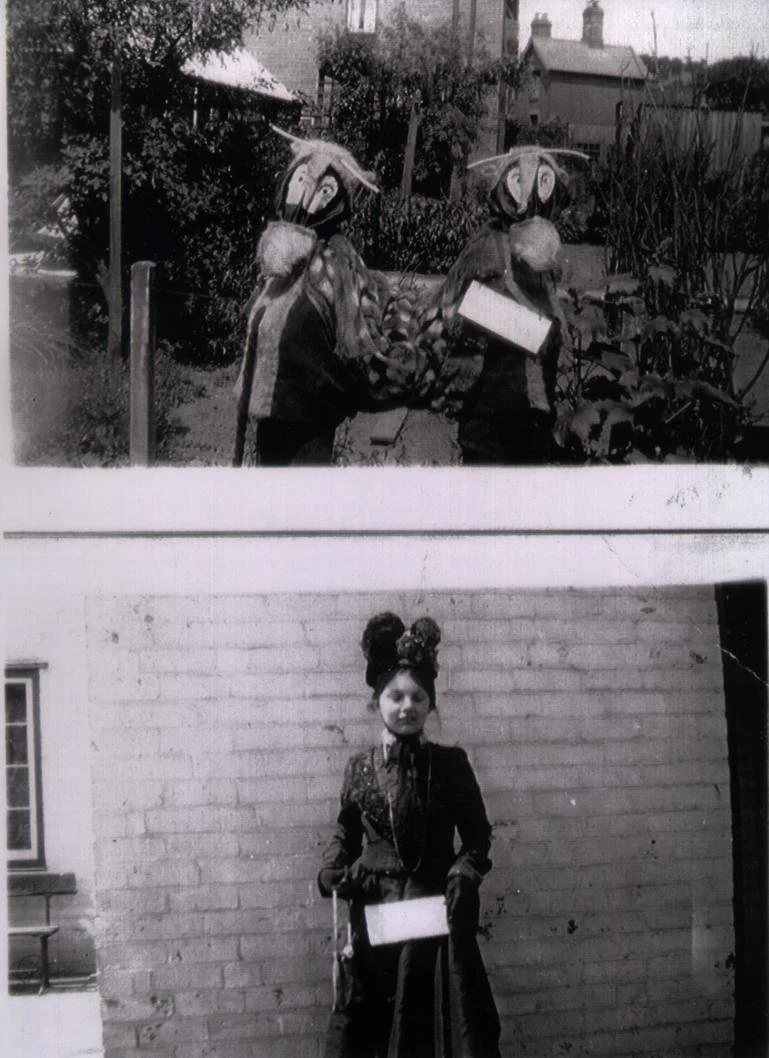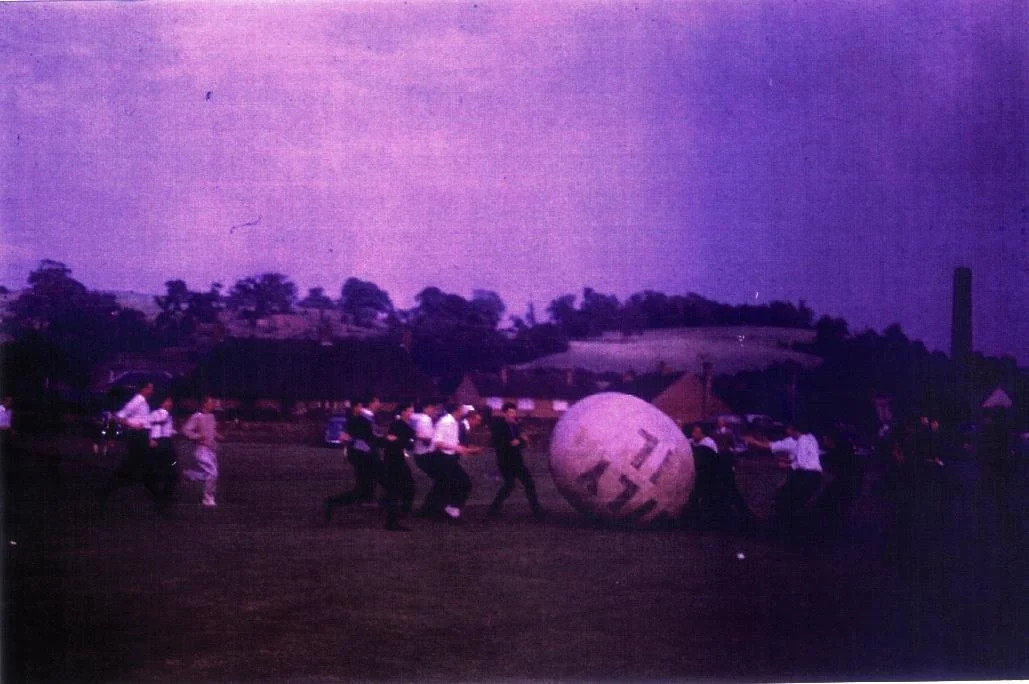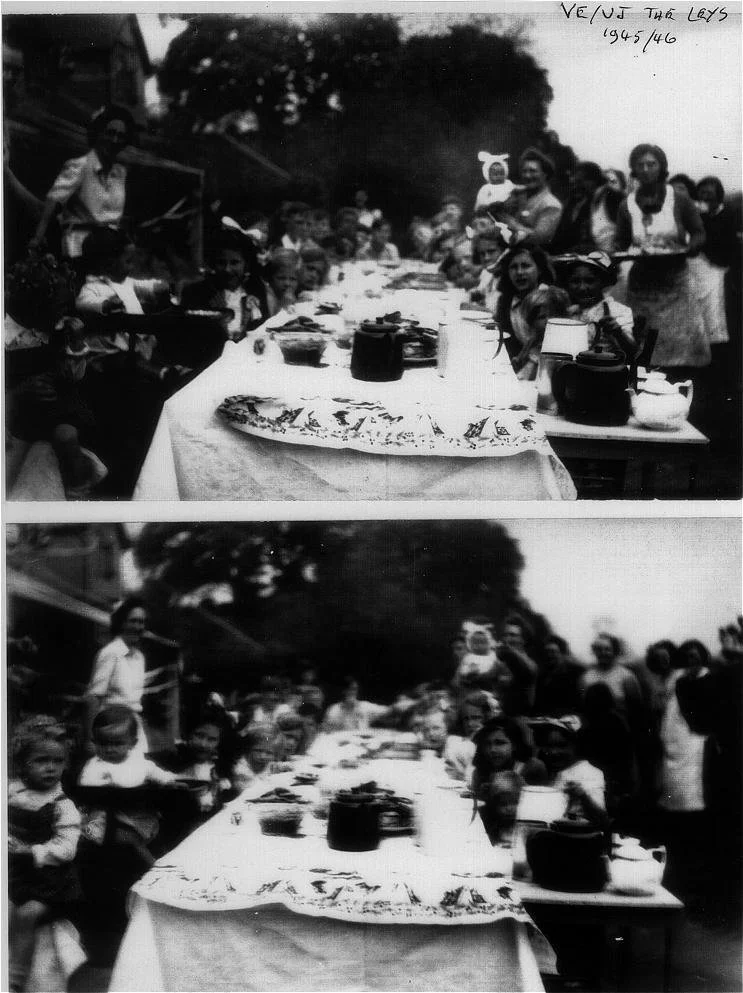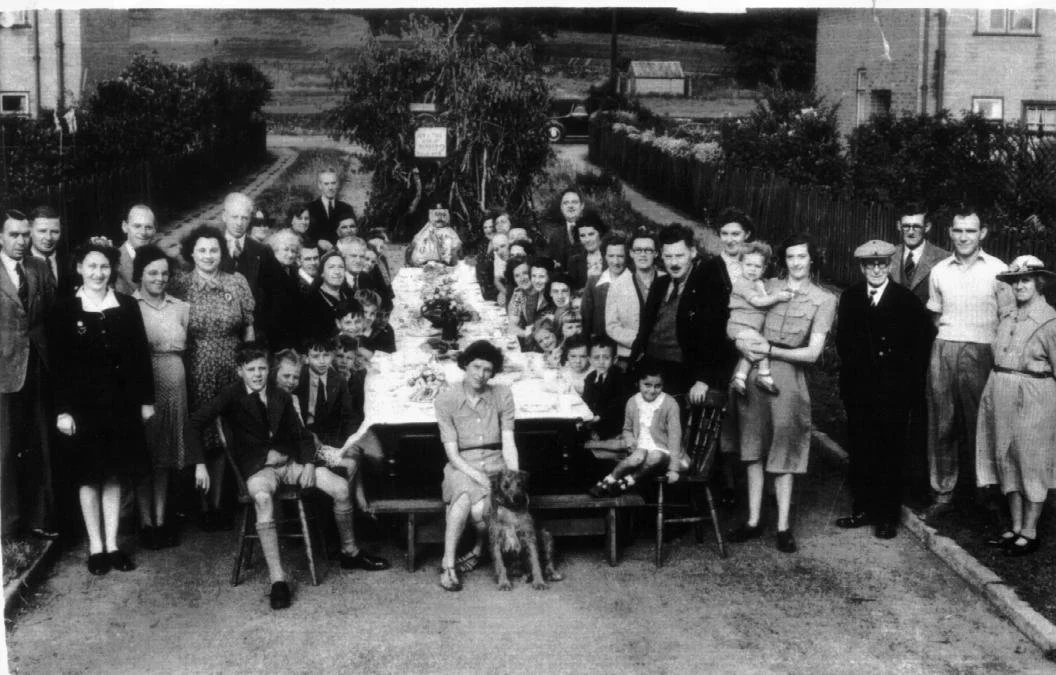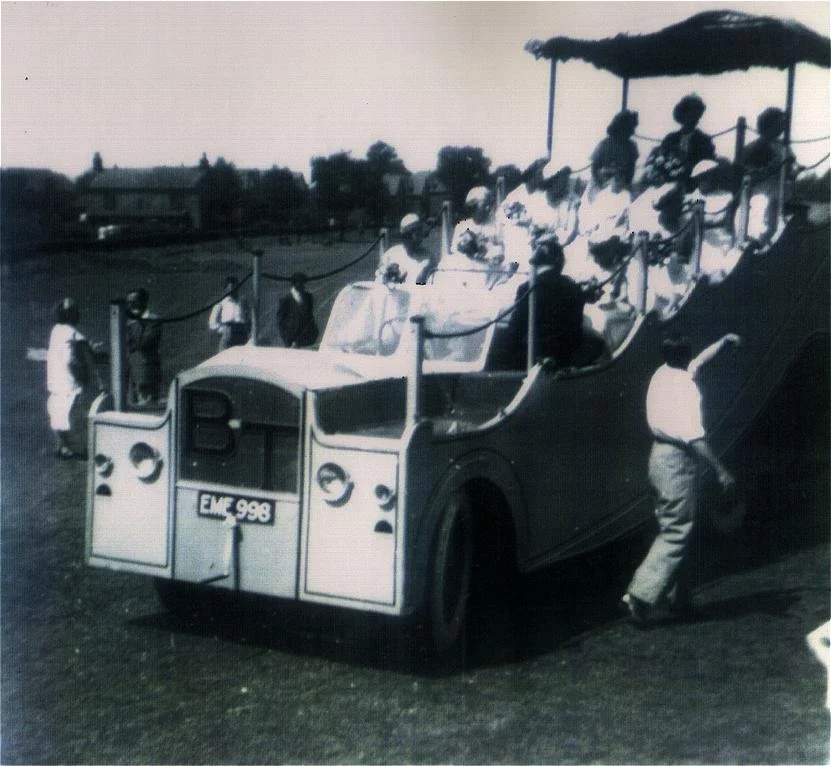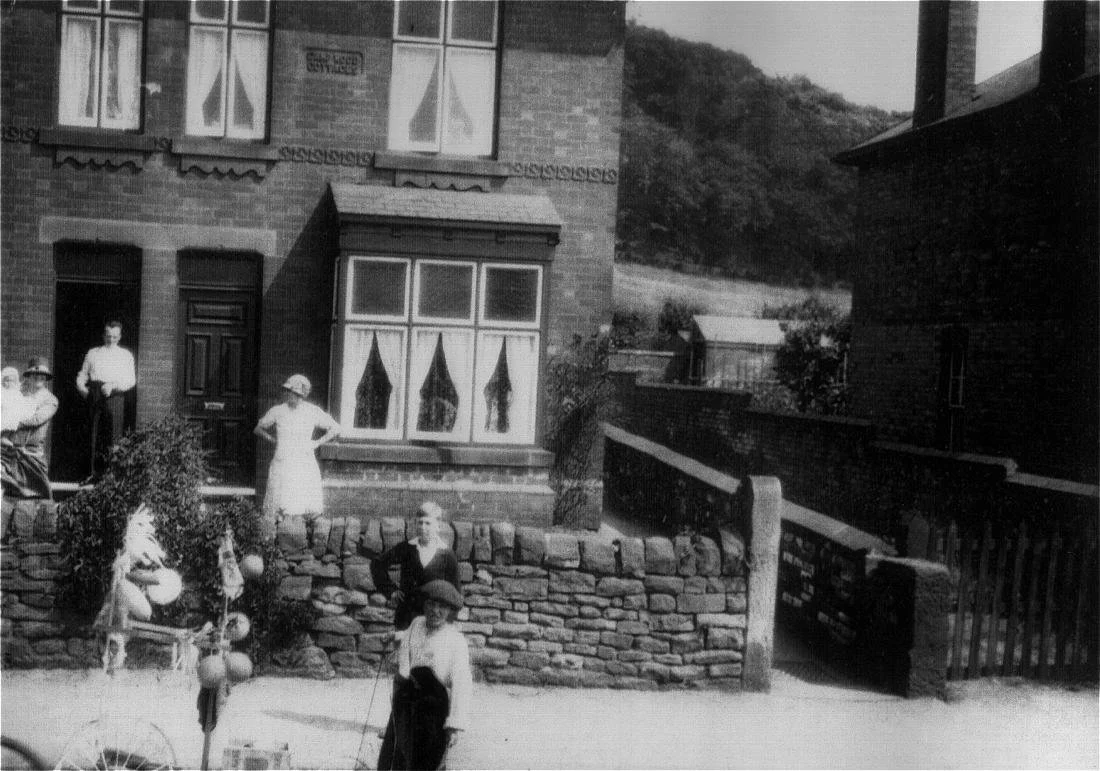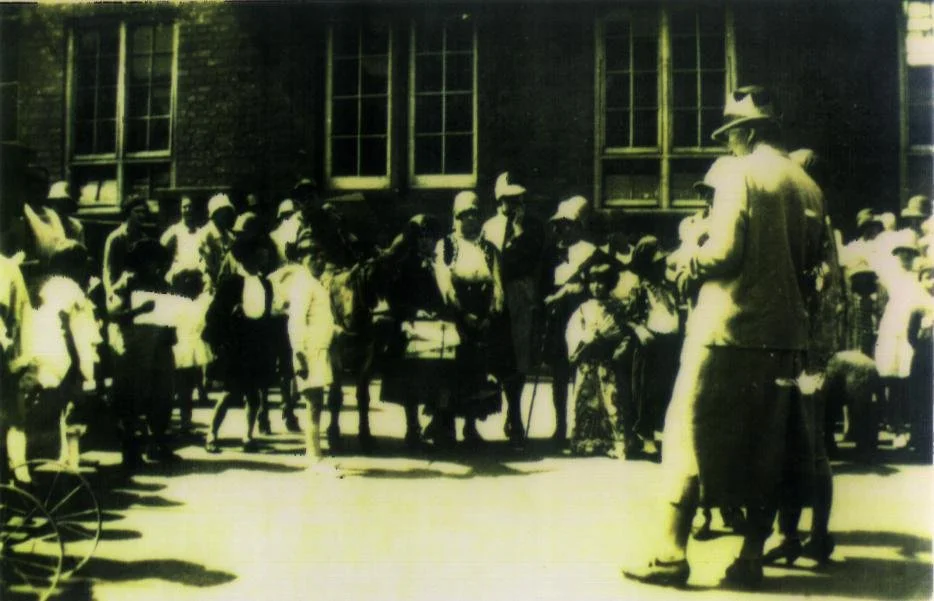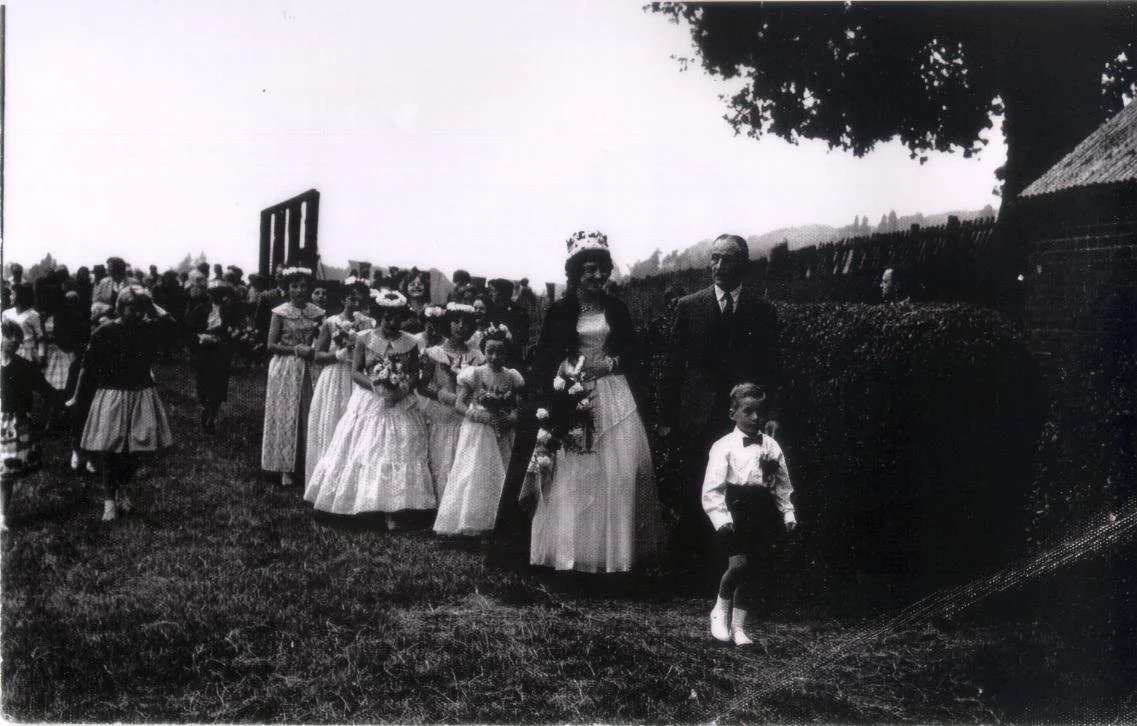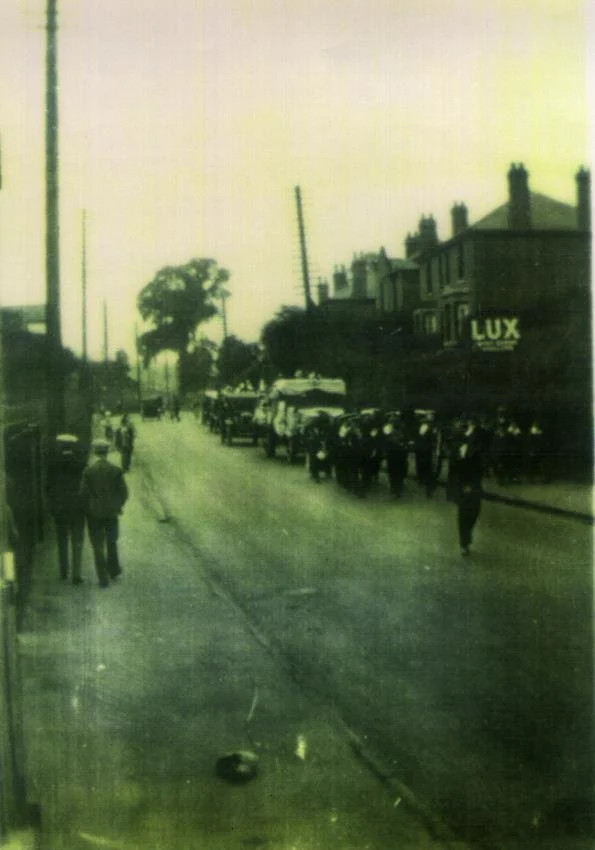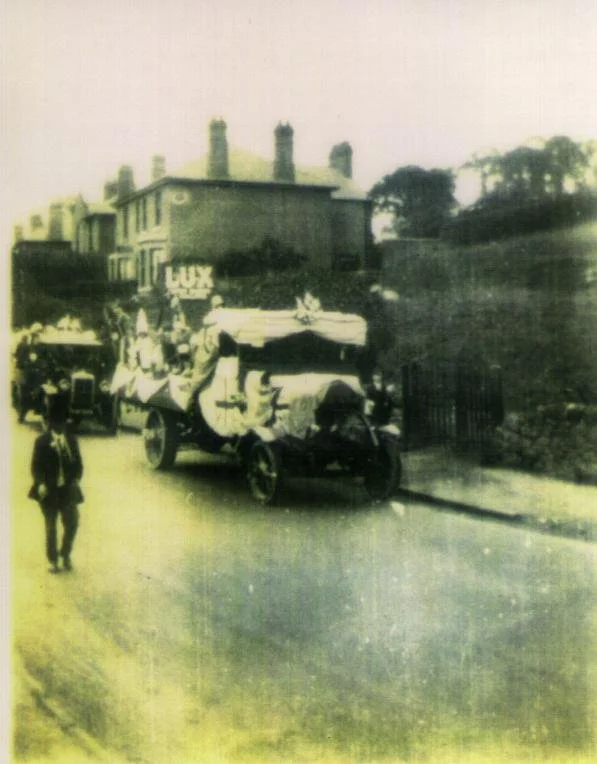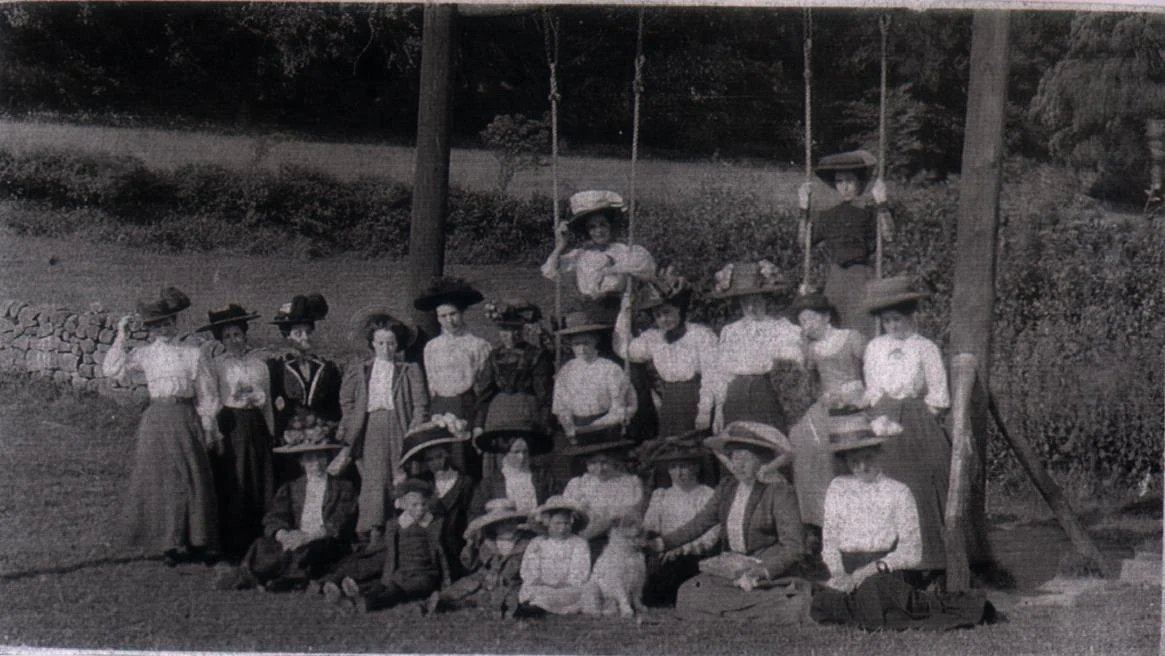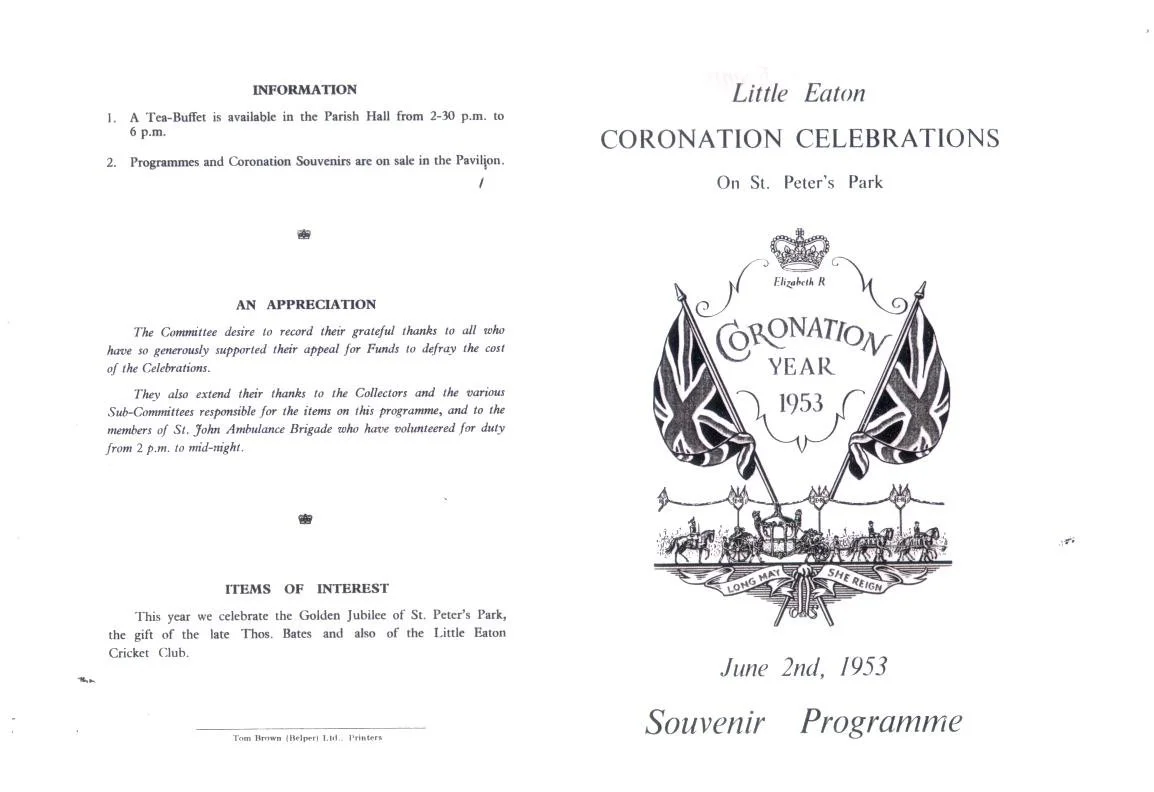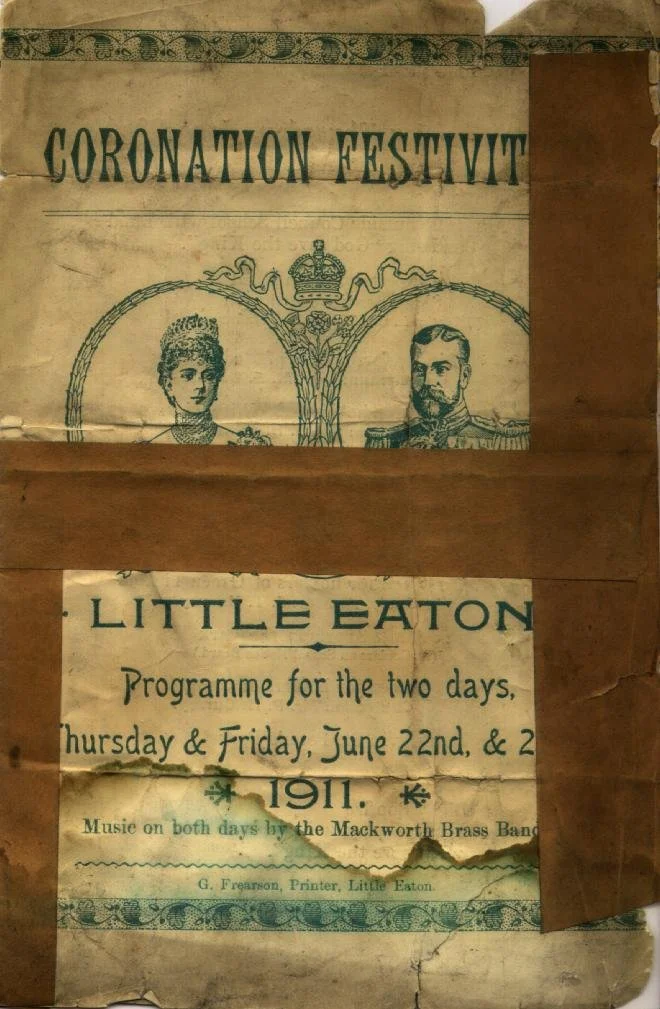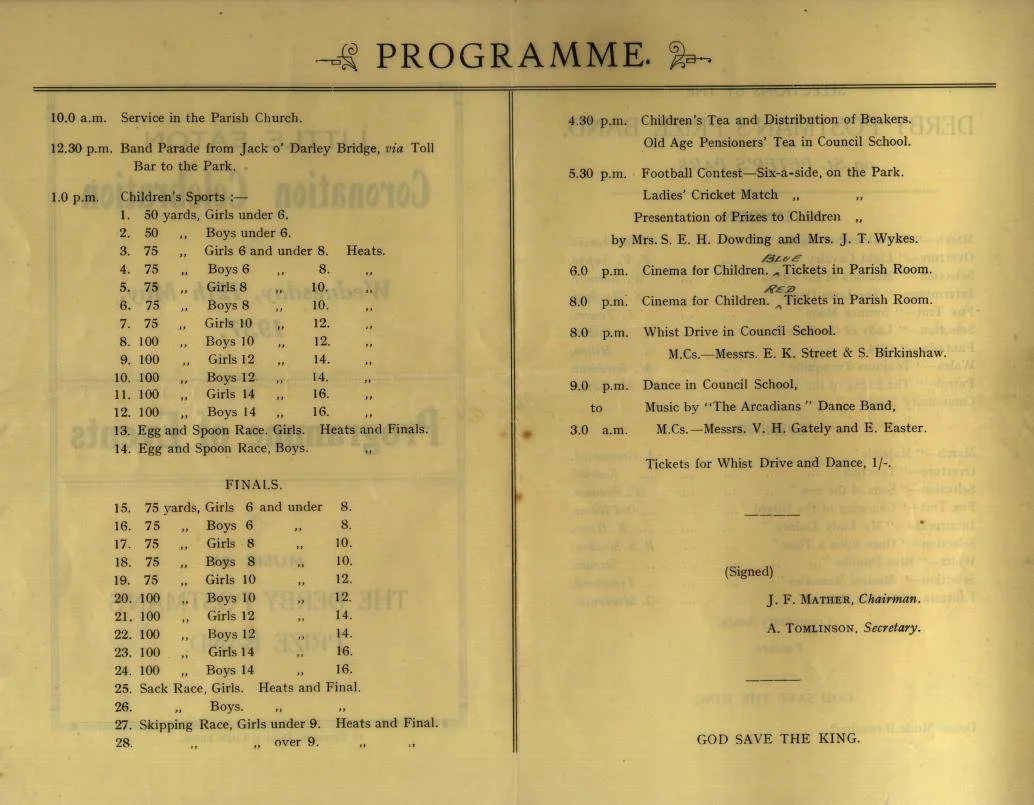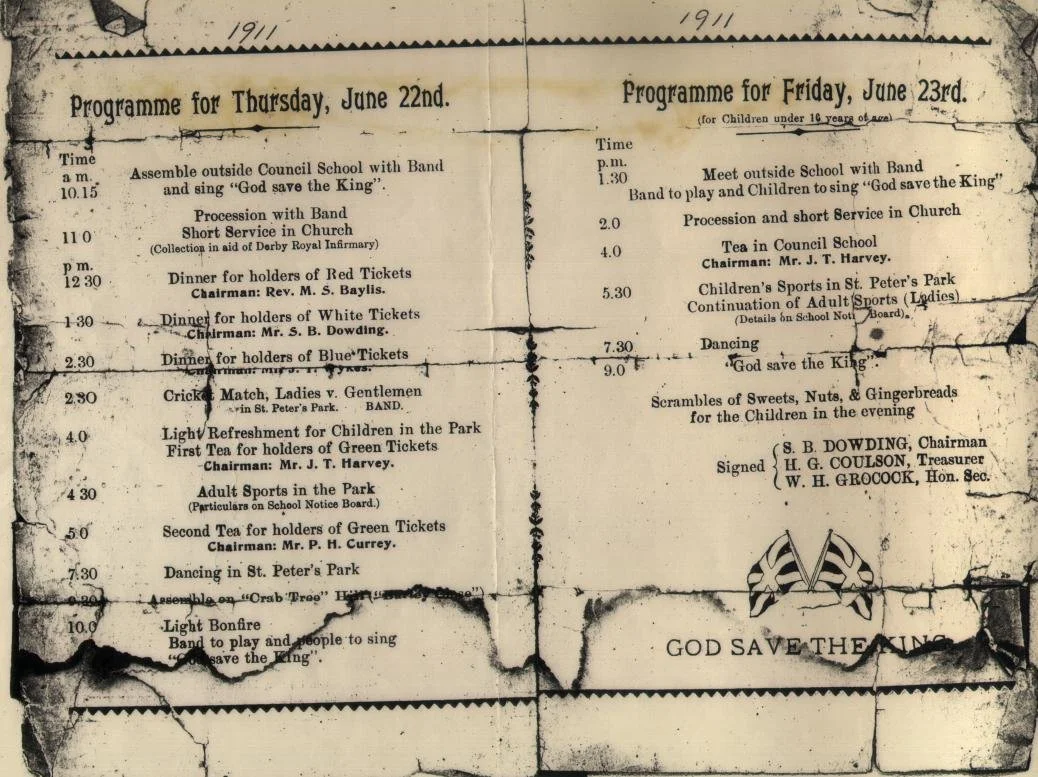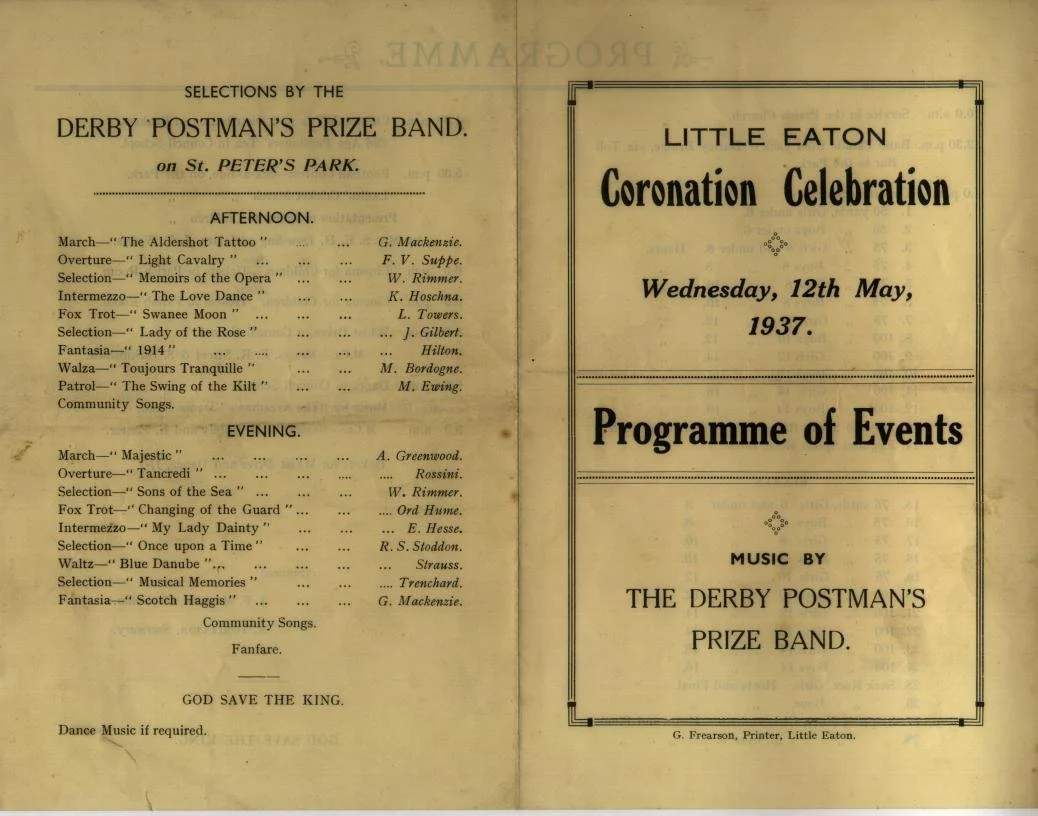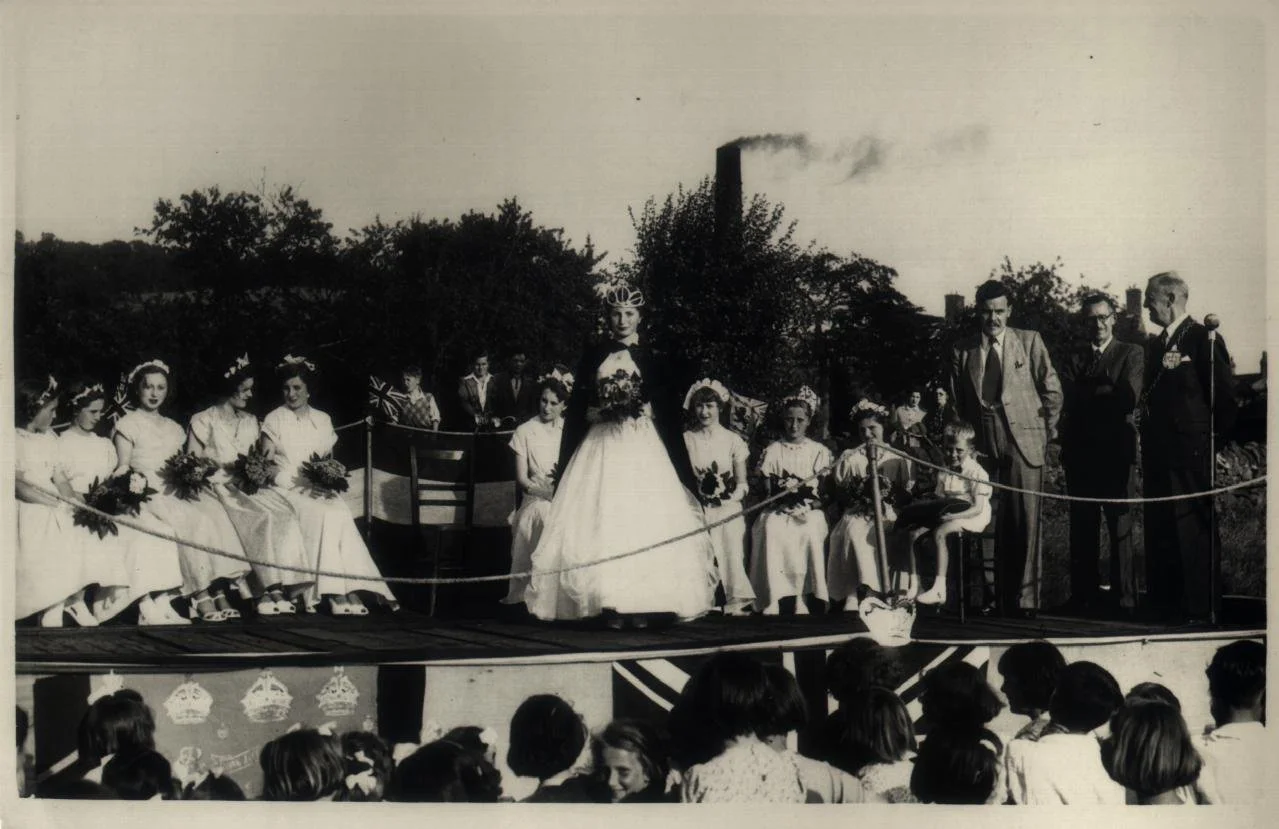
Little Eaton Carnival, Sports Day and village celebrations
The modern day carnival is a combination of the races and games first organised by the Sports Committee in the 1920s, and the “Tittlecock Fair” that had pre-dated this and continued into the 30s and 40s.
In the 1950s, the sports events were combined with many of the traditional fairground stalls, and a parade and other events were added, leading to what has now become firmly established as a week of Carnival activities.
Tittlecock Fair
The fair probably started in the 1880s and 1890s with walking groups from Derby on works holidays. It became a regular feature of Easter, with the main fair on Good Friday.
There were good links via the canal and the railway from the centre of Derby and Little Eaton became a sort of ‘mini Matlock Baths’ for visitors. Soon, Romany families were attracted and started to put up stalls and tents with fortune tellers, one armed bandits and other gambling machines, donkey rides and other attractions such as a six- legged horse. Many of these families were also trading at a similar fair in Connisbrough, just north of Sheffield. That fair was called the “Ticklecock” fair – named after a place called Tickhill and the presence of cock fighting at the fair. For some reason, the name was transferred to Little Eaton.
By 1913, the number of visitors had reached over 10,000. The New Inn and The Queens Head spotted an opportunity for making money. They both had access to fields – The New Inn had a field where Campwood Close is now, and the Queens Head had one along the Alfreton Road. These fields were opened as sites for stalls and attractions, with the pubs supplying refreshments. Stalls appeared along the side of Alfreton Road as far as Morley Lane. There was considerable disquiet in the village about these developments. In 1913 the newspapers were filled with letters of protest about the noise and seeming unwanted temptation presented to young people.
Unsuccessful attempts were made to revoke the licenses of the two pubs. According to the Derby Telegraph in March 1933, parishioners in the 1930s objected to the “rowdyism of holiday makers” and threw out a proposal to site the fair on the park, stating
“Little Eaton is not fit to live in on a Good Friday… this usually quiet place is made hideous for a few hours by crowds of young people who flock there from Derby and indulge in all sorts of horseplay”
Between 1920 and 1950, there were annual fines levied on some of the stall holders for illegal gambling. Gambling machines such as one- armed- bandits had been introduced from America and were money spinners for the owners. The fines were not harsh enough to deter the families running them – the same people were fined year after year.
During the war the field at the New Inn was used to accommodate as many as 14 caravans for Romany families and the Ball family had a caravan on the Mill Green site. Some families, including the Balls and the Jervis families settled in the village.
Sports Week
In 1925, there was a “Young Men’s Institute” run from in the old school building in Barley Close. The Institute had begun as an organisation to help young men returning from the war. The main organisers were teachers at the Primary School, by then situated on Alfreton Road. The first sports day was 1925 and the Sports Committee set up a week of activities, largely for children. The programme covered the usual races and competitions but included events for adults, such as tug of war competitions between pub teams.
In 1950 the Young Mens institute was dissolved and a Carnival committee of volunteers was formed. Chairman of the committee was a William (Bill) Kay. Secretary Jack Carmen and treasurer was Mr A Davies. Jack Carmen recalled “Bill Kay was a great motivator and it was decided for 1951 to have a parade complete with band, floats and a carnival queen. Bill really got us going”.
Jim Coley from the Outwoods garden provided a bouquet for the Carnival queen, and the pattern was set for Little Eaton Carnival and Sports Day in its present form.
Meanwhile, the popularity of the Fair began to wane. The railway was closed for passengers in 1962 and more people had cars in which they could travel further afield. The pub fields on which many attractions were situated were redeveloped for housing. Ticklecock fair stopped trading in 1963, and so the Sports and Carnival event began to take on some of the characteristics of the fair.
Peter Brady became Chair of the Committee in 1958 and more attractions were added and many more visitors from outside the village started to take part.
The parade and floats became a popular feature of the carnival, together with the races. The three pubs, the two playgroups, and many streets began to compete for the best float. Fred Fox was a well known entrant in the veteran’s race which he won many times. In memory of Fred and thanks to the generosity of his family, veterans now compete for the Fred Fox Trophy.
More recently under the Chairmanship of Bill Hutchison, Ben Deaville and Steve Mann, events such as a Treasure Hunt. “Wet Wild and Wacky” evenings and a Duck race became regular features. Apart from the two years of the Covid pandemic, a carnival has been organized on the park ever since.
We hope you enjoy the photographs below - please send any more to info@lelhs.org.uk
